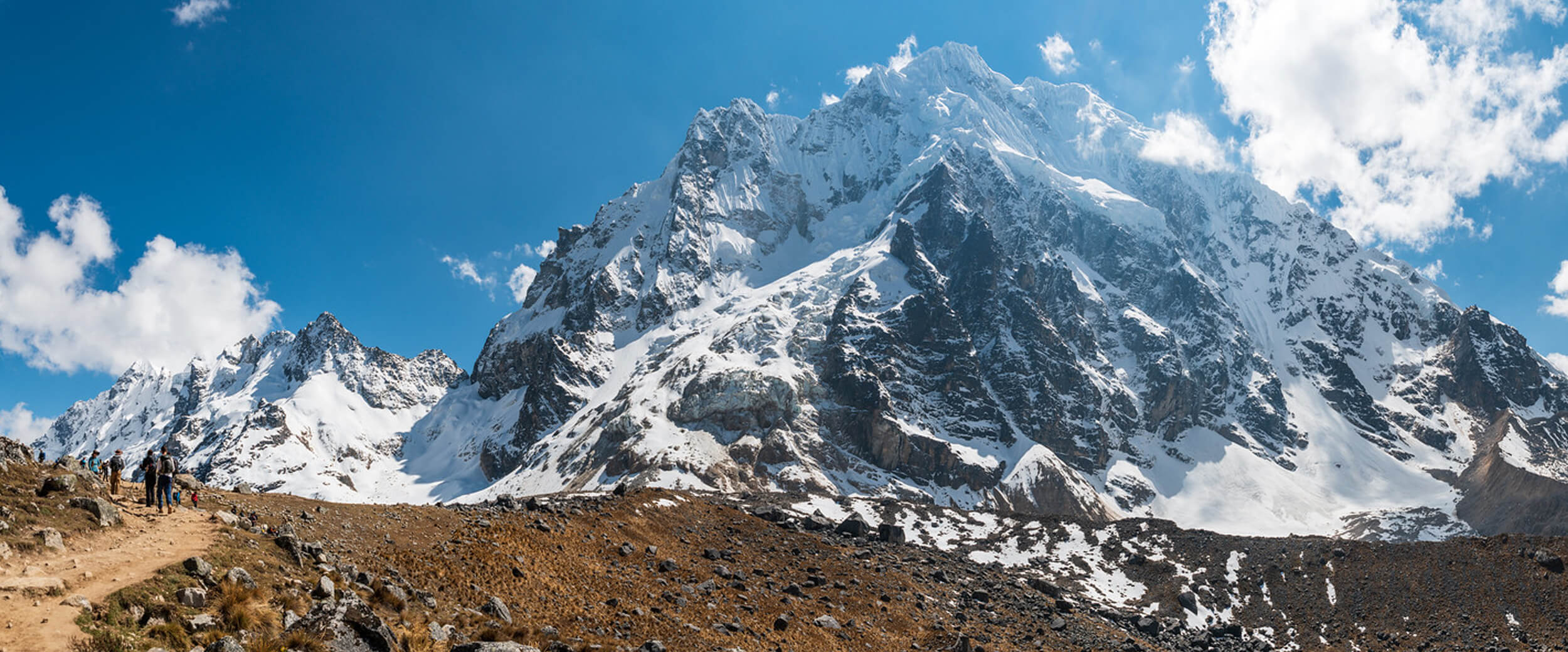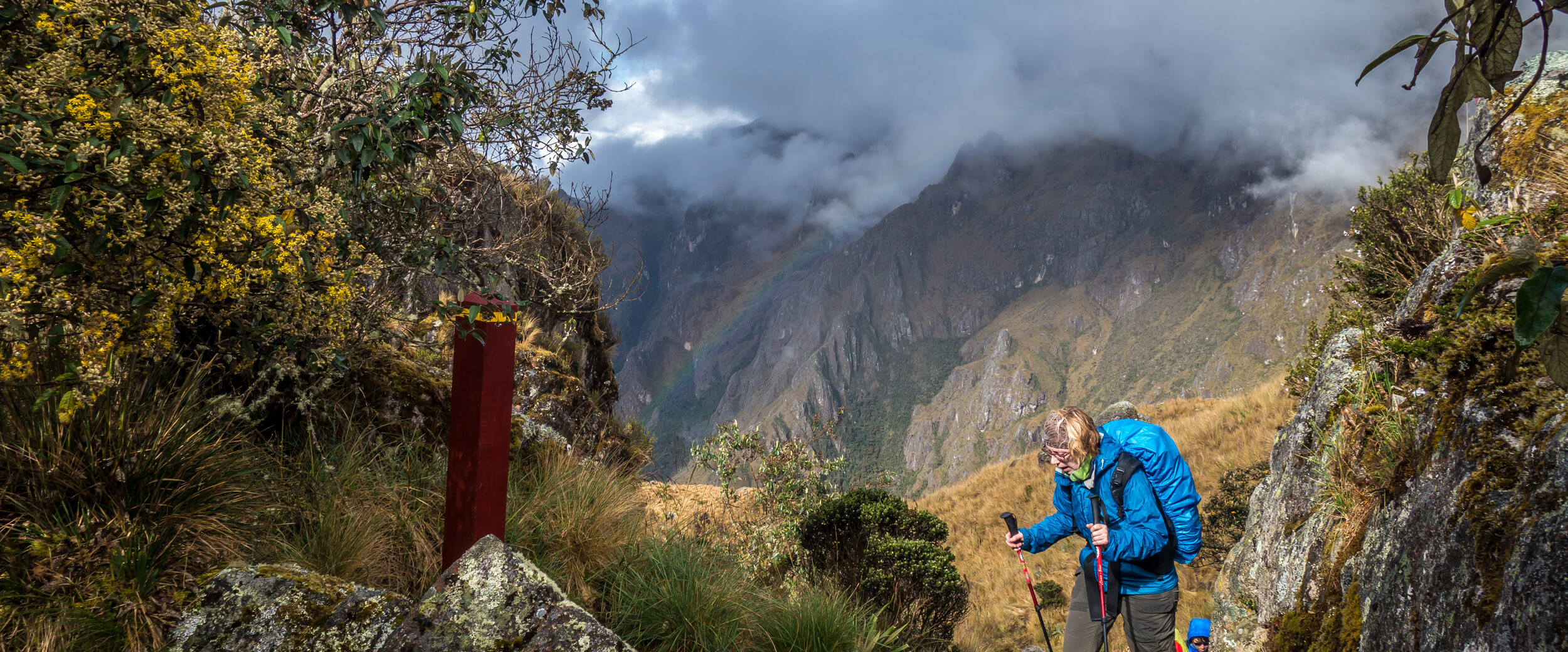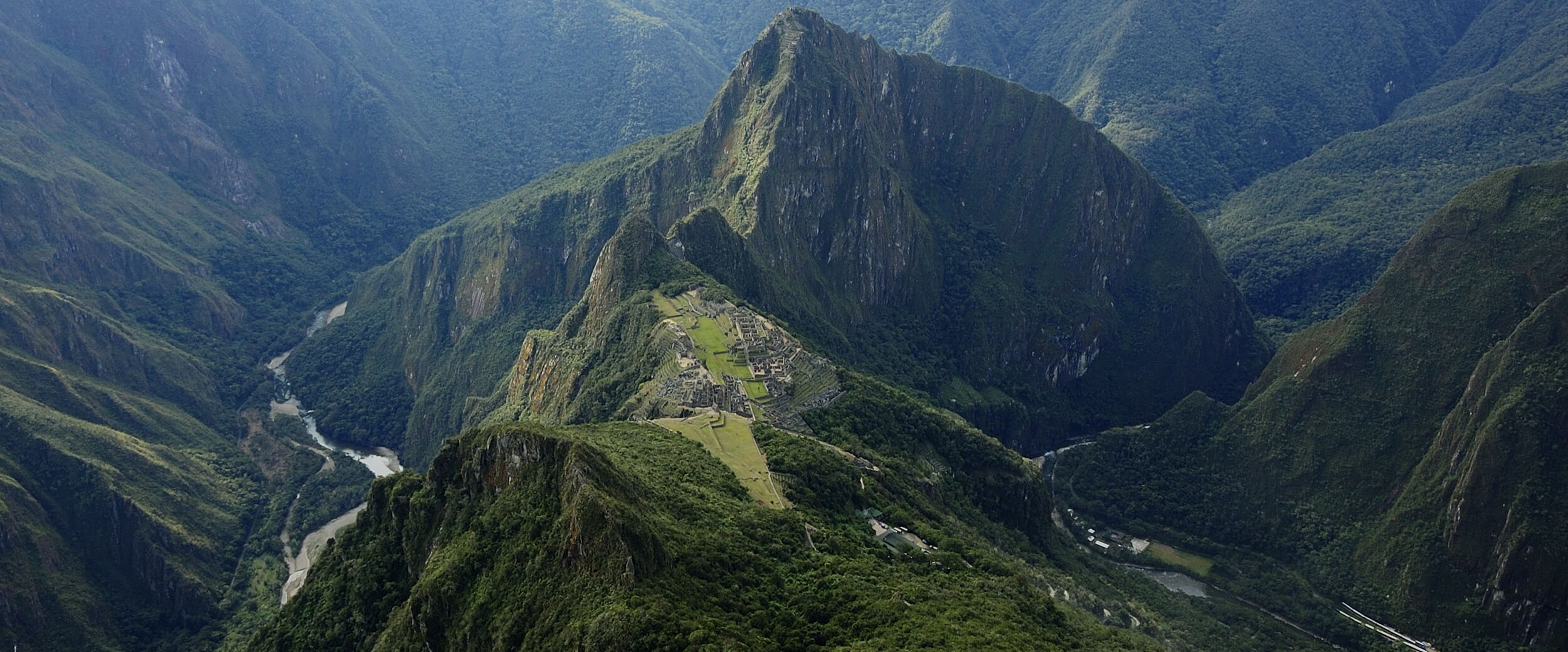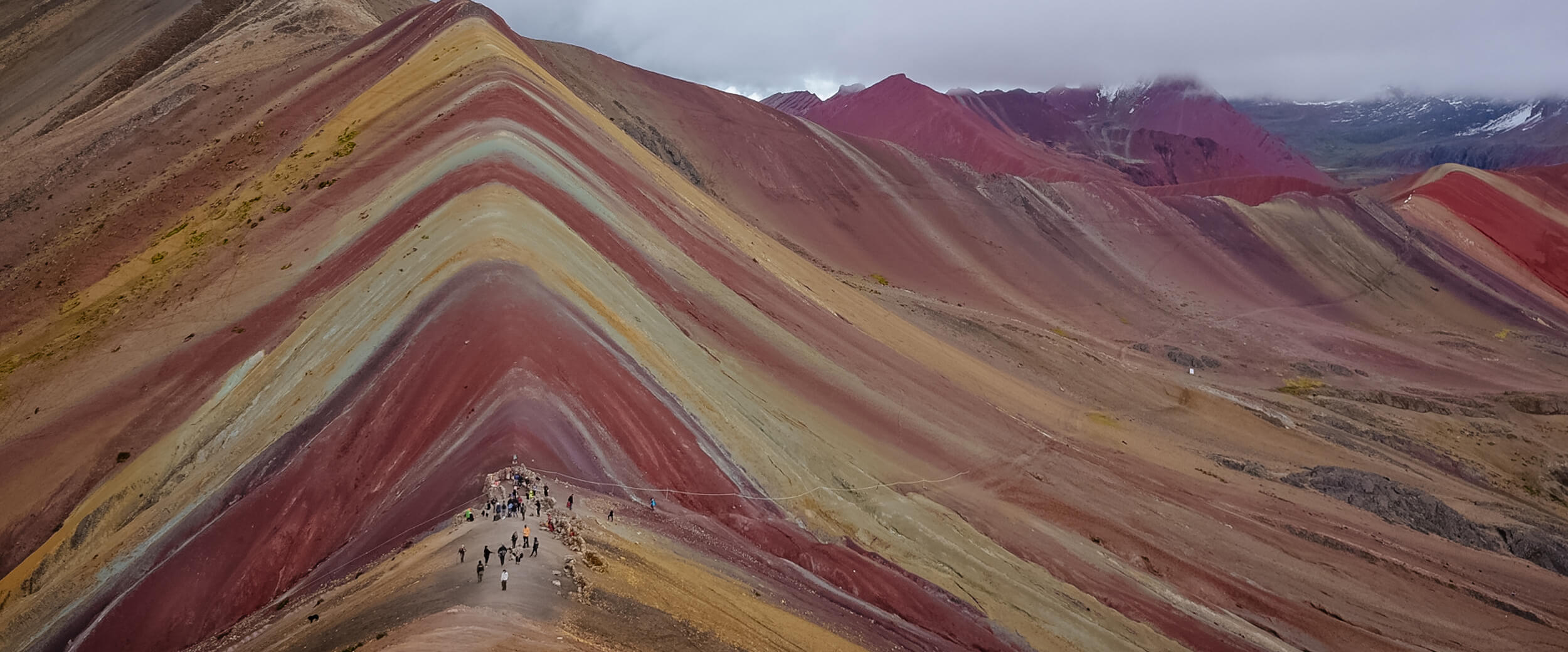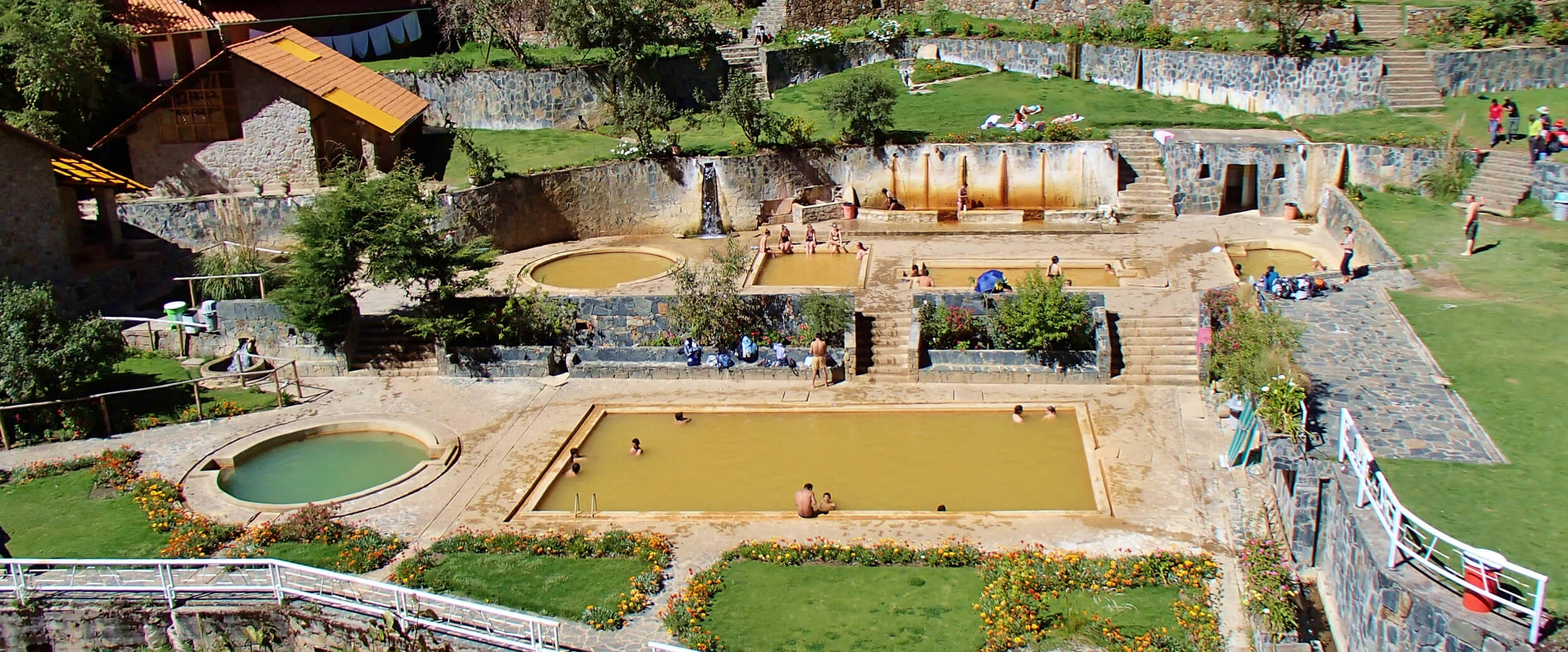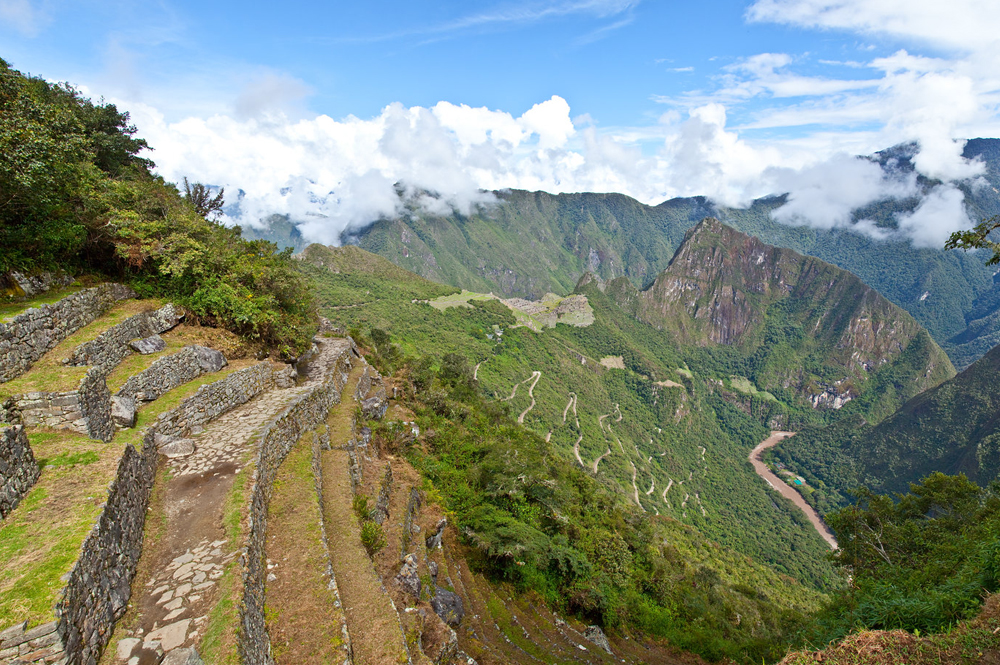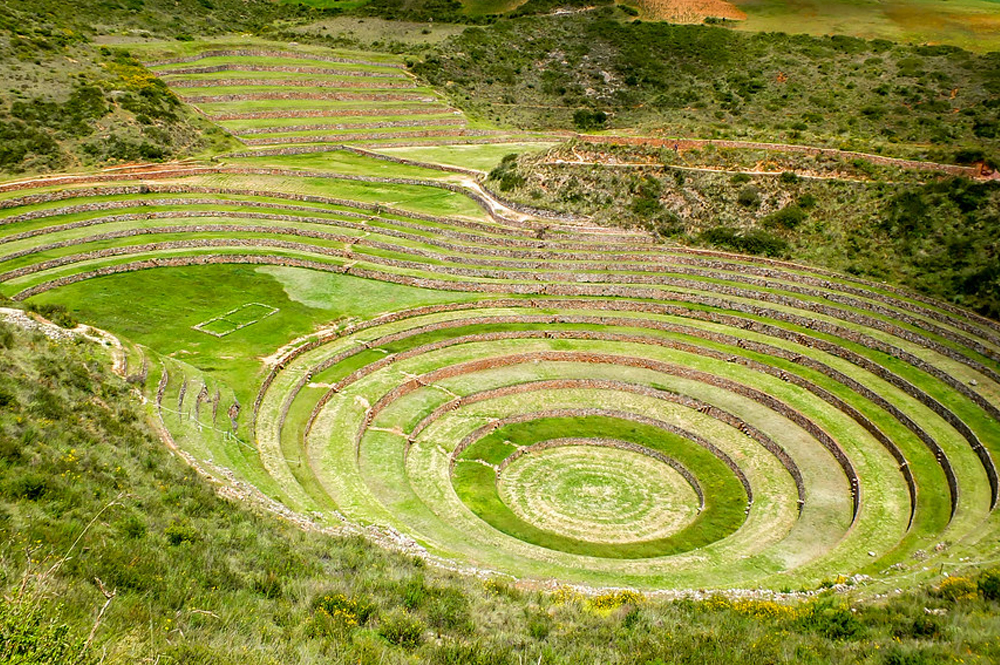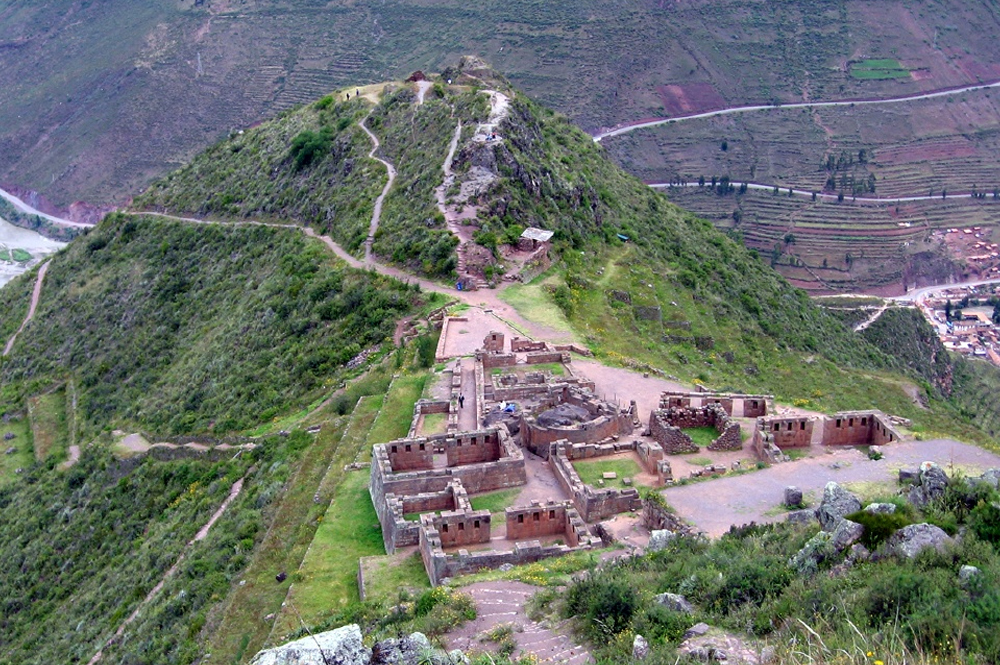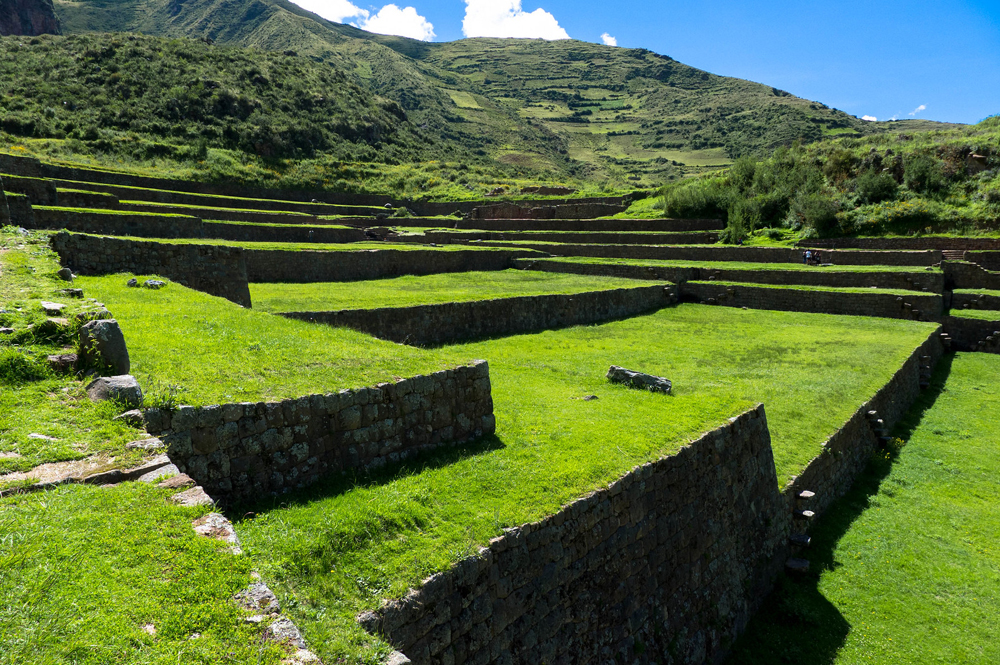Discovering Machu Picchu is a dream for many travelers. However, the classic Inca Trail isn’t the only way to reach this iconic site. Exploring alternative routes to Machu Picchu offers a unique perspective and avoids crowded paths.
In this guide, we’ll uncover lesser-known trails leading to Machu Picchu. These routes provide a blend of adventure and stunning scenery. They also offer a more tranquil experience compared to the traditional trail.
Join us as we explore hidden paths that promise breathtaking views and rich cultural encounters. These alternative routes reveal the beauty and mystery of Peru’s landscape. Thus, prepare to uncover the secrets of Machu Picchu in a way few have experienced.
Top of the Best Alternative Routes to Machu Picchu
- Salkantay Trek
This route offers stunning views of snow-capped peaks and diverse ecosystems. Keep in mind that, it’s a challenging trek with a high-altitude pass. - Lares Trek
Known for its cultural immersion, this trek passes through traditional Andean villages and hot springs. Indeed, it’s a less crowded option with beautiful landscapes. - Inca Jungle Trail
Combining hiking with other activities like biking and zip-lining, this adventurous route offers a mix of thrills and scenic beauty. - Huchuy Qosqo Trek
A shorter, less strenuous trek with impressive archaeological sites and panoramic views of the Sacred Valley. - Choquequirao Trek
This challenging trek leads to the remote ruins of Choquequirao, a lesser-known site often referred to as the “sister city” of Machu Picchu. - Vilcabamba Trek
Known as the “Final Inca Trail,” this route explores the region where the Inca Empire’s last stronghold was located. Thus it’s a journey through history and stunning landscapes.
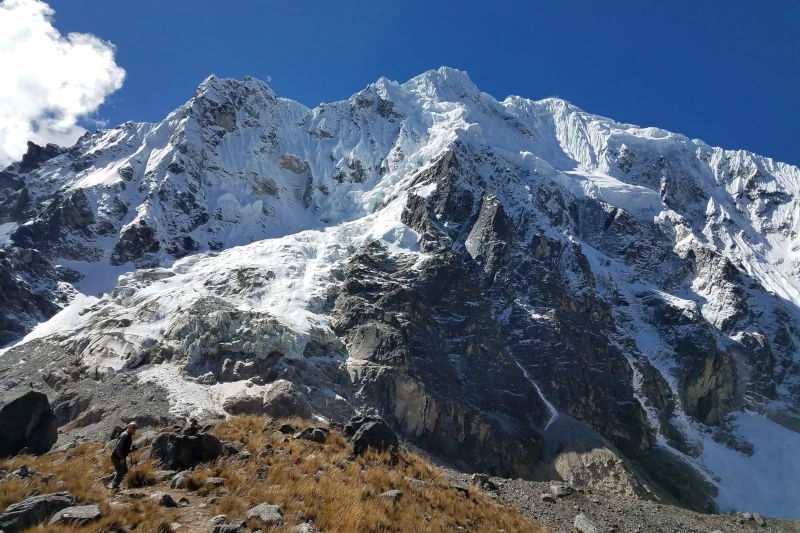
Discover Lesser-Known Paths: Unique Trails to Machu Picchu Beyond the Classic Inca Trail
While the Inca Trail remains popular, many travelers seek alternative routes to Machu Picchu for a unique adventure. Exploring these lesser-known paths offers a chance to experience Peru away from the crowds. These alternative routes to Machu Picchu not only provide stunning vistas but also showcase the region’s hidden gems.
Salkantay Trek: A High-Altitude Adventure
The Salkantay Trek stands out among alternative treks to Machu Picchu with its dramatic mountain scenery. This trail crosses high-altitude passes and diverse terrain, including cloud forests and alpine valleys. Hikers are rewarded with spectacular views of the snow-capped Salkantay Mountain and access to breathtaking Inca ruins.
Lares Trek: Cultural Immersion and Natural Beauty
The Lares Trek offers a unique combination of cultural immersion and natural beauty. This trek passes through traditional Andean villages in the Lares Valley, providing insight into local life and customs. The route also includes hot springs where travelers can relax after days of hiking.
Inca Jungle Trail: Adventure and Thrills
For those seeking a mix of adventure and scenic beauty, our Inca Jungle Trail delivers. This route combines hiking with activities like zip-lining and mountain biking. The trail leads to Machu Picchu through lush cloud forests and offers an exhilarating way to experience the landscape.
Choquequirao Trek: The Remote Sister of Machu Picchu
The Choquequirao Trek is perfect for those looking to explore less-visited Inca ruins. This challenging route takes hikers to the remote site of Choquequirao, often called the “sister city” of Machu Picchu. It provides an immersive journey through rugged mountain ranges and archaeological wonders.
These alternative routes to Machu Picchu offer diverse experiences for travelers seeking a unique adventure. Whether you are drawn to high-altitude treks or cultural immersion, these paths have Peru’s landscape and history. Exploring these hidden trails allows you to visit Machu Picchu from a fresh and unforgettable perspective.
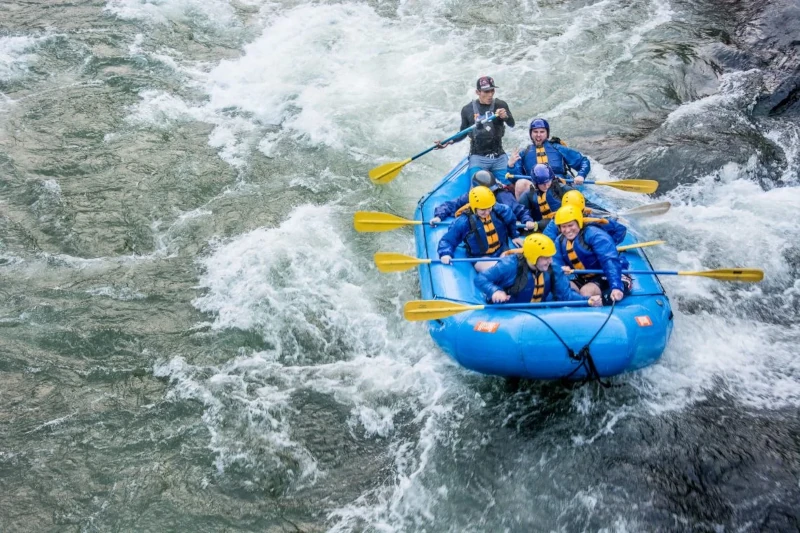
Escape the Crowds: Alternative Routes to Experience the Magic of Machu Picchu
Experiencing the various Inca Trail treks to Machu Picchu away from the crowds requires exploring alternative routes. In fact, these trails offer unique perspectives and fewer visitors compared to the classic Inca Trail. With careful planning, travelers can enjoy a serene journey while discovering the rich history and stunning landscapes of Peru.
Choosing the Right Trek
Selecting the best alternative route to Machu Picchu starts with understanding your interests and fitness level. Therefore, to determine the best fit, consider what kind of adventure you seek—whether it’s high-altitude treks or cultural immersion. Each trek offers distinct experiences, from exploring remote Inca ruins to hiking through lush cloud forests.
Planning and Permits
While the classic Inca Trail requires a permit, most alternative routes to Machu Picchu do not. Nevertheless, it’s essential to secure permits or book tours in advance for popular alternatives. For instance, some routes require permits for specific sections, so plan ahead to avoid last-minute hassles.
Prepare for Altitude and Weather
Altitude sickness can affect travelers on many of the alternative treks to Machu Picchu. Acclimating to the altitude before starting your trek helps mitigate symptoms. Also, prepare for variable weather conditions by bringing appropriate clothing for rain, cold, and sun.
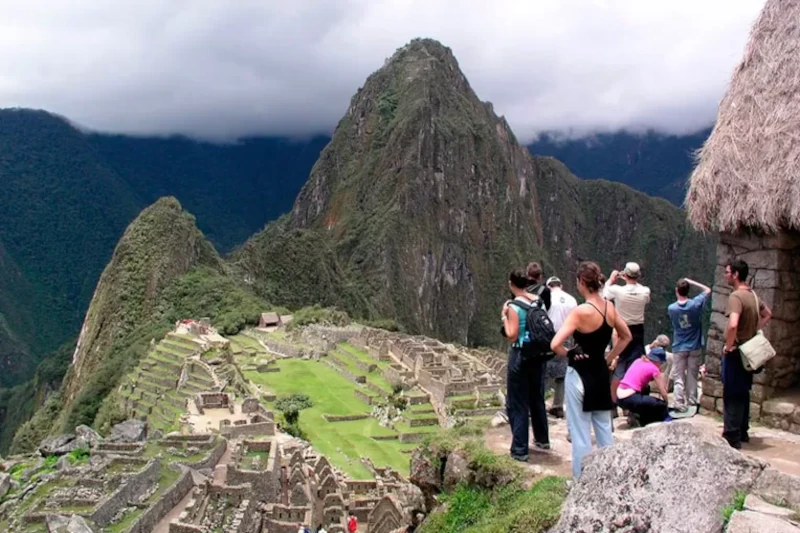
Pack Smart and Light
It is true that packing light and smart is crucial for any trek. Essential items include sturdy hiking boots, moisture-wicking clothing, a hat, sunscreen, and a reusable water bottle. A small backpack with your personal essentials will make your journey more comfortable.
Optimize Your Itinerary
When planning your trek, additionally, consider including extra days for rest and exploration. This approach helps you adjust to the altitude and enjoy the surrounding areas without feeling rushed. A multi-day tour in Peru can enhance your overall experience to explore diverse landscapes and cultural sites.
If you don’t have the time to explore with any rush, try the Short Inca Trail. You will be able to see the Sun Gate and other sites like Wiñay Wayna. The trek in Peru is up to your needs and Inca Trail permits.
Stay Hydrated and Nourished
Maintaining hydration and energy levels is vital on any trek. Therefore, carry sufficient water and high-energy snacks to keep you energized throughout the hike. Please, have a proper nutrition and hydration contribute significantly to your overall comfort and performance on the trail.
Respect Local Cultures
Naturally, many alternative routes to Machu Picchu pass through local communities. Consequently, it’s important to respect local customs and practices. Engaging respectfully with locals enriches your experience and helps preserve the cultural integrity of the areas you visit.
Capturing the Experience
Don’t forget to bring a camera to capture the breathtaking views and memorable moments. Whether you’re admiring the sunrise or exploring ancient ruins, photos will serve as lasting memories of your adventure. Additionally, remember to be mindful of your surroundings and the preservation of the environment.
By following these tips, consequently, you can make the most of your journey on the alternative routes to Machu Picchu. Thus, these trails not only help you escape the crowds. They also allow you to experience this iconic destination in a unique and memorable way.
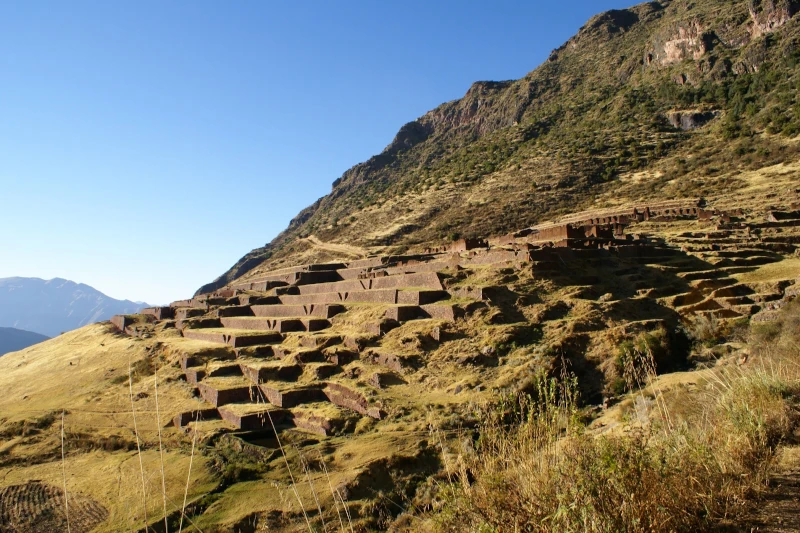
Coca tea offers numerous health benefits. This traditional beverage from the Andes is gaining popularity. Let’s explore how it boosts wellness.
Rich in vitamins and minerals, coca tea supports overall health. It provides a natural energy boost. Many people use it to enhance focus and alertness.
Coca tea helps with digestion and reduces bloating. It can also aid in weight management. Drinking it promotes a healthy body functions.
Antioxidants in coca tea fight free radicals. This can reduce inflammation and support immune function. Regular consumption may improve overall well-being.
It can be an amazing help if you are planning to hike the Choquequirao Trek or the Huchuy Qosqo Trek to Machu Picchu.
Nutritional Value of Coca Tea
Is also known as mate de coca, offers a remarkable range of nutrients. It is a staple in South America. People in Peru and Bolivia have consumed it for centuries.
This tea contains essential vitamins and minerals. It is rich in calcium, which strengthens bones. Coca tea also provides significant amounts of iron.
Iron in this tea helps combat anemia. It supports healthy red blood cell production. Additionally, this tea contains vitamin A and vitamin E.
These vitamins support eye health and skin rejuvenation. It also has small amounts of protein. This makes it a nutritious beverage for daily consumption.
Essential Nutrients in Coca Tea
Coca tea is a source of several B vitamins. These vitamins are crucial for energy transformation. They help convert food into usable energy.
The tea also provides riboflavin and niacin. These nutrients support cellular function and repair. Drinking it can enhance your body’s nutrient intake.
Moreover, this tea contains antioxidants. These compounds fight free radicals in the body. They help reduce stress and inflammation.
Present antioxidants promote overall health. They support the immune system’s functionality. Regular consumption can lead to better health outcomes.
The Role of Alkaloids
This tea contains natural alkaloids. These alkaloids act as mild stimulants. They provide a gentle energy boost without jitters.
Decocainized coca tea is available. This version removes the cocaine content. The alkaloid extracted is cocaine from coca.
Even decocainized, it still provides benefits. The remaining alkaloids enhance mood and alertness. Many people prefer it for its mild stimulant effects.
It also contains tannins. Tannins have astringent properties. They can help soothe the digestive system.
Comparing Coca Tea and Other Teas
It offers unique benefits compared to other teas. It has a different nutritional profile. Unlike black or green tea, it contains significant minerals.
The alkaloid content sets it apart. This makes it a preferred choice for many. It provides sustained energy without caffeine crashes.
This tea is also lower in caffeine. This makes it suitable for people sensitive to caffeine. They can enjoy the benefits without adverse effects.
It is similar to other traditional beverages. Like yerba mate, it is culturally significant. Indigenous peoples have used it for generations.
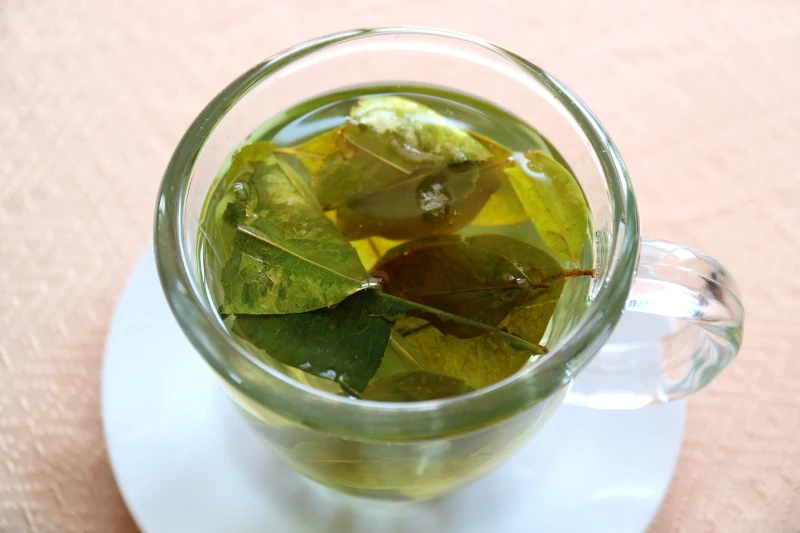
The Cultural Significance of Coca Tea
Indigenous peoples in South America revere coca tea. It is an integral part of their traditions. Coca leaf chewing is also common in these cultures.
It holds spiritual and medicinal value. People use it in various ceremonies. It is a symbol of cultural heritage and resilience.
Despite its benefits, this tea faces legal challenges. The Single Convention on Narcotic Drugs impacts its availability. Some countries restrict its use due to alkaloid content and extreme effects of coca leaf.
In the United States, it is less accessible. It is often misunderstood due to its association with cocaine. However, decocainized versions are legal and safe.
Adding Coca Tea into Your Diet
You can easily add this tea to your daily routine. Moreover, it is available in tea bags and loose leaf forms. You can find it in health stores or online.
To prepare it, simply steep the leaves in hot water. Then, let it brew for a few minutes. Finally, enjoy it plain or with a touch of honey.
It is refreshing and energizing. In fact, many people start their day with a cup of coca tea.
You can also use it in recipes. It adds a unique flavor to smoothies. Try adding it into your cooking for added nutrients.
Potential Health Benefits of Coca Tea
This tea supports overall wellness. It aids in digestion and weight management. The vitamins and minerals promote better health.
Regular consumption can boost your energy levels. It enhances focus and mental clarity. It is a natural way to improve your well-being.
People often use coca tea for altitude sickness if you are hiking the Salkantay Trek. It helps alleviate symptoms in high-altitude regions. This makes it popular among travelers in the Andes.
Is also used for its anti-inflammatory properties. It can help reduce pain and swelling. This makes it beneficial for people with chronic conditions.
It offers a wealth of nutritional benefits. It is rich in essential vitamins and minerals. Its unique properties support overall health and wellness. Incorporate this tea into your diet for a natural boost.
Boosting Energy and Focus
Many know the coca tea for boosting energy and focus. This traditional medicinal drink has been there for centuries. Indigenous peoples of South America, especially in Bolivia and Colombia, have relied on it.
Its natural alkaloids provide a gentle stimulant effect. Unlike highly addictive substances, it offers a balanced energy boost. People use it to stay alert without the jitters.
Many professionals prefer it for sustained energy. It enhances focus and concentration. This makes it ideal for demanding tasks.
Coca Tea vs. Coffee
Coca tea offers a smoother energy boost compared to coffee. Coffee often leads to energy crashes. This tea provides steady, long-lasting energy.
It has lower caffeine content. This makes it suitable for those sensitive to caffeine. They can enjoy its benefits without negative side effects.
Moreover, it contains beneficial nutrients. These enhance its energy-boosting effects. People find coca tea a healthier alternative to coffee.
Enhancing Mental Clarity
Coca tea is effective in improving mental clarity. It helps sharpen focus and cognitive function. This makes it popular among students and professionals.
The tea’s natural stimulants enhance brain function. They improve memory and learning capabilities. Regular consumption can lead to better mental performance.
Its benefits extend to mood enhancement. It can reduce stress and anxiety. This contributes to a clearer, more focused mind.
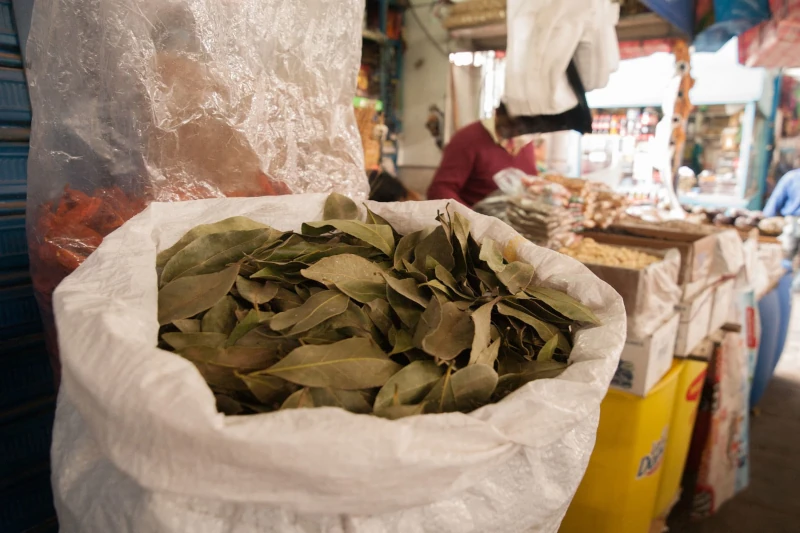
Coca Tea in the Workplace
Many people are putting coca tea into their work routines. It helps maintain high productivity levels. It can replace sugary energy drinks.
Office workers enjoy it for its mental benefits. It keeps them alert during long meetings. It supports sustained focus throughout the day.
Remote workers also find it beneficial. It helps them stay concentrated in home environments. Is a natural aid for maintaining work efficiency.
Coca Tea for Athletes
Athletes benefit greatly from this tea. It boosts their energy and endurance. Coca tea supports physical performance and recovery.
The tea’s nutrients aid muscle function. They reduce fatigue and enhance stamina. Athletes often drink this tea before training sessions.
It also helps with hydration. It can replace electrolyte drinks. This makes it a versatile addition to any athlete’s diet.
However, you should be careful according to the quantity you drink. This is because you may test positive in a drug test.
Coca Tea and Altitude
This this tea famous for preventing altitude sickness. People in high-altitude regions rely on it. It alleviates symptoms like headaches and nausea.
Travelers to the Andes drink coca tea to adjust. It helps them adapt to the thin air. It ensures a more comfortable experience in high altitudes.
The tea supports oxygen uptake. This reduces altitude-related fatigue. This tea allows travelers to enjoy their adventures without discomfort.
Preparing Coca Tea
Preparing this tea is simple. Steep the leaves in hot water for a few minutes. You can enjoy it plain or with a bit of honey.
For a stronger brew, let it steep longer. You can drink this tea hot or cold. It’s versatile and suits various preferences.
Some people prefer chewing coca leaves. This traditional method provides quick energy. However, it is important to be aware of legal restrictions.
Legal Considerations
This tea faces legal challenges in some regions. The association with cocaine complicates its status. Many countries, including the United States, have regulations.
Decocainized coca tea is available in these areas. It removes the psychoactive alkaloid. This version is legal and safe to consume.
Travelers should check local laws before carrying it. Some countries have strict regulations. It’s important to stay informed and compliant.
Personal Experiences
Many people share positive experiences with this tea. They praise its energy-boosting effects. Coca tea has become a daily ritual for many.
Users report increased focus and productivity. They appreciate the natural energy boost. It helped them in various aspects of life.
The tea’s benefits extend beyond energy and focus. It supports overall well-being. This tea is a versatile and valuable addition to any diet.
Coca tea is an excellent natural stimulant. It boosts energy and enhances focus. By adding this tea into your routine can improve your productivity and well-being.
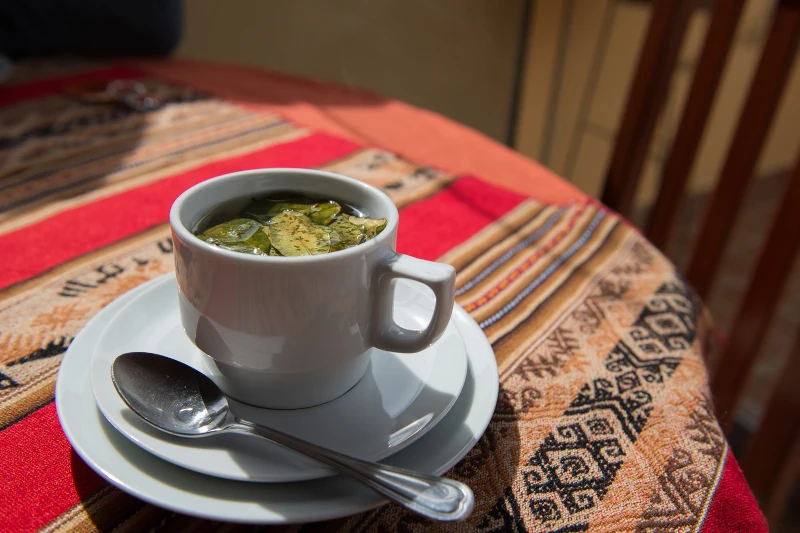
The Short Inca Path offers a breathtaking trek to Machu Picchu. This route provides an unforgettable adventure without the lengthy journey of the classic Inca Trail. Prepare to be amazed by stunning views and rich cultural experiences.
Hiking the Short Inca Path delivers an exhilarating experience for outdoor enthusiasts. With fewer crowds and a quicker trek, it’s ideal for those short on time. This guide will help you navigate every step of the way.
Discover essential tips and insights for a successful hike on the Short Inca Path. From what to pack to how to prepare, we’ve got you covered. Get ready to explore one of the most captivating trails leading to Machu Picchu.
What to Expect on the Short Inca Path: Highlights and Hints
The Short Inca Path offers a condensed but captivating trek to Machu Picchu. This route provides stunning views and rich historical insights in a shorter time frame. You’ll traverse beautiful landscapes, ancient ruins, and lush cloud forests along the way.
The adventure begins with a scenic journey to the starting point of the Short Inca Path. Most tour operators, like Inca Path, will arrange transportation from your hotel in Cusco to the trailhead. Prepare to witness breathtaking sights as you start your hike.
Highlights of the Short Inca Path
As you hike, you’ll first encounter the archaeological site of Chachabamba. This ancient ruin sets the stage for the adventure ahead. From Chachabamba, the path ascends, offering impressive views of the Sacred Valley.
The trail continues through a rich cloud forest, showcasing diverse flora and fauna. You’ll pass by several fascinating archaeological sites along the way. Each site provides a glimpse into the grandeur of the Inca civilization.
One of the standout moments on the Short Inca Path is the visit to Wiñay Wayna. This site features terraced fields and stunning views of the Urubamba River. The high altitude may pose a challenge, so it’s important to stay hydrated and acclimatize properly.
Preparing for the Short Inca Path
Proper preparation is key for a successful hike on the Short Inca Path. Ensure you have the right gear for varying weather conditions and high altitudes. This includes sturdy hiking boots, layered clothing, and rain gear.
Altitude sickness can be a concern, so take necessary precautions before starting your trek. The Peruvian government requires permits to hike Inca Trail, which includes the Short Inca Path. Secure your permits well in advance through authorized tour operators.
Navigating the Trail
The final stretch of the Short Inca Path leads directly to Machu Picchu. As you approach, the excitement builds, culminating in the awe-inspiring view of this ancient wonder. You’ll have ample time to explore and absorb the historical significance of the site.
The Short Inca Path provides a remarkable opportunity to experience the beauty and history of the Inca Trail in less time. This trek delivers the highlights of the classic route while fitting into a shorter schedule. With the right preparation, you can enjoy a memorable adventure leading to one of the most iconic destinations in the world.
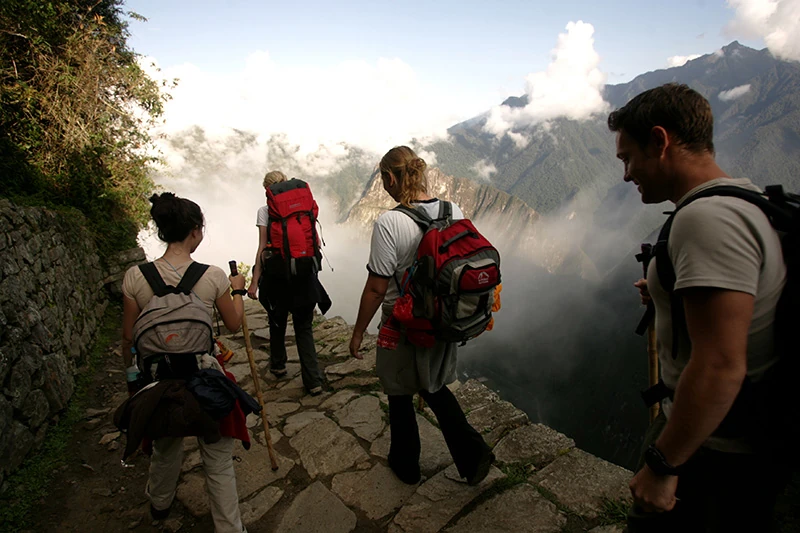
Essential Gear and Prep for Your Short Inca Path Adventure
Preparing for the Short Inca Path requires careful attention to gear and preparation. This hike, though shorter than the classic Inca Trail, still demands a well-thought-out packing list. Proper gear ensures a comfortable and enjoyable trek through stunning landscapes and ancient ruins.
Must-Have Gear for the Short Inca Path
Start with a pair of high-quality hiking boots. These should offer good ankle support and sturdy traction for uneven terrain. The Short Inca Path includes steep ascents and descents, making reliable footwear crucial for safety and comfort.
Layered clothing is essential for the variable weather conditions you’ll encounter. Temperatures can range from cool mornings to warmer afternoons. Bring moisture-wicking base layers, a warm fleece or jacket, and a waterproof outer layer.
A well-fitted daypack will carry your essentials comfortably. Pack items such as water, snacks, sunscreen, and a hat. Ensure your daypack is lightweight and easy to manage during the hike.
Preparing for Altitude and Weather
Altitude sickness can affect hikers on the Short Inca Path, so proper acclimatization is vital. Spend a few days in Cusco before your trek to adjust to the high altitude. Drinking plenty of water and avoiding strenuous activity will help reduce the risk.
Weather on the trail can be unpredictable, so be ready for rain and sun. A lightweight, breathable rain jacket and hat will protect you from sudden downpours. Pack sunglasses and sunblock to guard against strong UV rays.
What to Pack for Your Trek
For the Short Inca Path, include a small first aid kit in your gear. This should contain basics such as blister treatment, pain relievers, and any personal medications. Having these items on hand can address minor issues quickly and efficiently.
A reusable water bottle is also important to stay hydrated throughout your hike. The Short Inca Path provides opportunities to refill, but ensure your bottle is sufficient for your needs. Proper hydration supports your energy levels and overall well-being.
When hiking the Short Inca Path, your itinerary will include notable sites like Chachabamba and Wiñay Wayna. These archaeological sites offer fascinating glimpses into Inca history. Plan to spend time exploring these ruins to fully appreciate their significance.
Keep your camera handy for capturing the breathtaking views of the Sacred Valley and the Urubamba River. The Short Inca Path delivers stunning landscapes that are perfect for memorable photographs. Be mindful of local regulations and respect the natural environment while taking photos.
Ensure you obtain the necessary Inca Trail permits well in advance. These permits are required for all hikers on the Short Inca Path. Secure them through authorized tour operators to avoid any last-minute issues.
The right gear and preparation are crucial for a successful adventure on the Short Inca Path. With proper clothing, footwear, and essential items, you’ll be ready to tackle this remarkable trek. Enjoy your journey through this historic trail and the breathtaking views it offers.
Top Tips for Navigating the Short Inca Path and Reaching Machu Picchu
The Short Inca Path requires careful planning and preparation to fully enjoy your adventure. This shortened version of the classic Inca Trail provides a unique opportunity to explore ancient ruins and stunning landscapes. With a few tips, you can ensure a smooth and memorable experience as you reach the awe-inspiring trail to Machu Picchu.
1. Plan Ahead and Secure Permits
One of the first steps in preparing for the Short Inca Path is securing your permits. The Peruvian government requires permits for all hikers on this route. Make sure to book these permits well in advance through authorized tour operators to guarantee your spot.
The Short Inca Path is popular, and permits can sell out quickly. Booking early not only secures your place but also allows you to plan your itinerary efficiently. Ensure that your tour operator provides all the necessary details for a seamless journey.
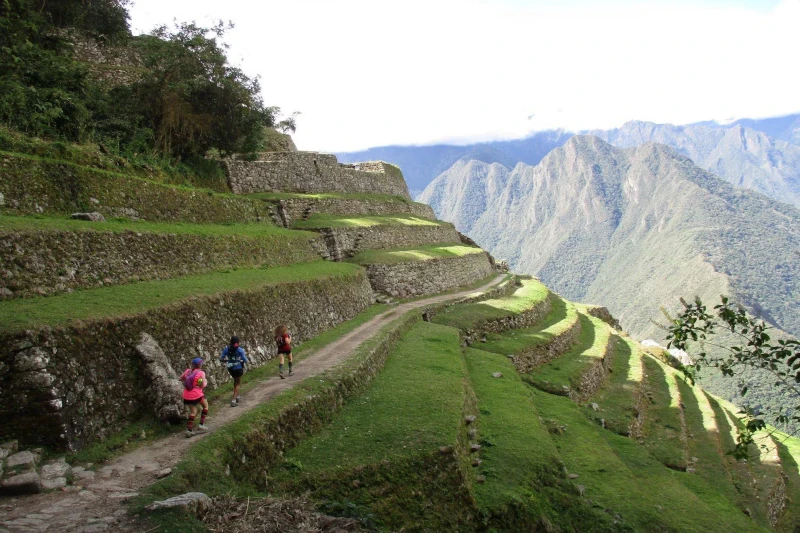
2. Prepare for Altitude and Weather
Acclimatization is essential when hiking the Short Inca Trail to Machu Picchu due to the high altitude. Spend a few days in Cusco before starting your trek to adjust to the elevation. This preparation helps reduce the risk of altitude sickness and ensures you have the energy for the hike.
The weather on the trail can be unpredictable, with temperatures fluctuating between chilly mornings and warm afternoons. Pack layers of clothing, including a warm jacket and rain gear, to stay comfortable. Bring a hat and sunscreen to protect yourself from sun exposure during the day.
3. Gear Up for the Trek
Having the right gear is crucial for a successful hike on the Short Inca Path. Invest in high-quality hiking boots that provide good support and traction. The terrain includes steep sections, so sturdy footwear will help prevent injuries and enhance your comfort.
In addition to boots, a well-fitting daypack is important for carrying essentials. Include items like a reusable water bottle, snacks, and a first aid kit in your pack. Keeping your gear organized and lightweight will make your hike more enjoyable.
4. Stay Hydrated and Energized
Hydration is key when tackling the Short Inca Path, so drink plenty of water throughout your trek. The high altitude can dehydrate you faster than usual, so keep your water bottle handy. Also, pack energy-boosting snacks like nuts and fruit to maintain your stamina.
During the hike to Machu Picchu, take regular breaks to rest and enjoy the views. This will help you maintain a steady pace and prevent exhaustion. Each stop provides a chance to appreciate the stunning landscapes and historical sites along the path.
5. Explore Key Sites Along the Path
Part of the Inca Path features several significant archaeological sites worth exploring. Start with Chachabamba, an ancient site that offers a glimpse into the Inca civilization. Continue to Wiñay Wayna, known for its terraced fields and panoramic views of the Sacred Valley.
As you approach Machu Picchu, take the time to soak in the breathtaking scenery. The final stretch of the Short Inca Path leads directly to this iconic destination. Ensure you capture the moment and appreciate the rich history of this remarkable site.
6. Follow Local Regulations and Respect Nature
Respecting local regulations and preserving the natural environment is essential while hiking the Short Inca Path. Follow designated trails and avoid touching or climbing on ruins. Your efforts help protect this cultural heritage and ensure future generations can enjoy it.
Also, be mindful of litter and dispose of waste properly. Carry out everything you bring with you, including trash and leftover food. By doing so, you contribute to the conservation of this beautiful and historic area.
7. Enjoy the Journey
Finally, remember to enjoy your full days on the Short Inca Path. Take time to appreciate the unique experiences and stunning views along the way. The adventure is as much about the journey as it is about reaching Machu Picchu.
With these tips in mind, you’ll be well-prepared for an unforgettable hike on the Short Inca Path. Embrace the challenges, savor the beauty, and make the most of your experience on this incredible trek.
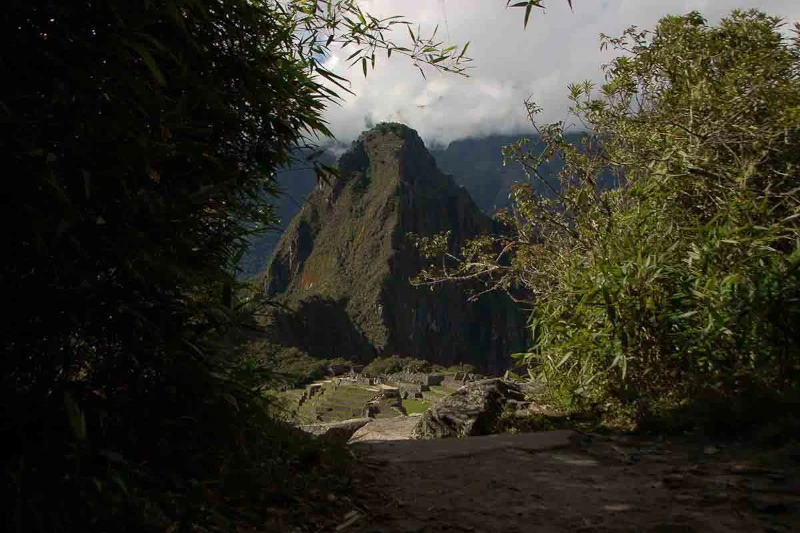
Hidden high in the Andes, Choquekirao remains one of the least explored Inca sites. This ancient city offers stunning views and rich history. Many consider it a hidden gem of the Inca Empire.
Unlike Machu Picchu, Choquekirao sees few visitors, preserving its mystery. Its remote location ensures a peaceful exploration experience. Here, you can truly connect with Inca heritage.
The journey to Choquequirao with Inca Path is challenging but rewarding. Hikers pass through diverse landscapes, including lush forests and rugged mountains. The trail provides an authentic adventure, away from crowded tourist spots.
Exciting Trekking Experience to Choquekirao
Within the Peruvian Andes, the Choquekirao trek offers an amazing adventure. This less-traveled path provides an immersive experience in Inca history. Many visitors overlook Choquekirao, making it a true hidden gem.
Choquekirao, often called the “cradle of gold,” remains one of the Inca Empire’s best-kept secrets. This archaeological site rivals Machu Picchu in grandeur and mystery. Its remote location ensures fewer tourists and more solitude.
The trek to Choquekirao starts from the village of Cachora in Cusco, Peru. From there, you descend into the deep Apurimac Canyon. The journey offers stunning views of the Apurimac River and surrounding mountains.
Journey Through Diverse Landscapes
Trekking to Choquekirao takes you through varied landscapes. You will encounter lush forests, rugged mountains, and expansive valleys. The trail presents a mix of challenges and breathtaking scenery.
The trek typically spans four days, providing a full immersion in nature. Each day brings new sights and experiences. You will cross the Apurimac River on a suspension bridge, adding to the adventure.
High altitudes on the trail require proper acclimatization. The trek reaches elevations of up to 3,050 meters (10,007 feet). It’s essential to prepare for these altitudes to ensure a safe and enjoyable experience.
Planning for the Trek
Choosing the right season is crucial for a successful Choquekirao trek. The dry season, from May to October, offers the best conditions. During this time, the weather is more predictable and the trails are less muddy.
In contrast, the rainy season, from November to April, presents more challenges. Heavy rains can make the trail slippery and more difficult to navigate. However, the scenery during this season is lush and green.
Packing the right gear is essential for the trek. Bring sturdy hiking boots, a good quality backpack, and reliable sleeping bags. Also, pack clothing for both warm days and cold nights.
Immersive Historical Experience
Choquekirao holds immense historical significance. It is believed to have been a major city during the Inca Empire. The site served as a refuge for Manco Inca, who fought against Spanish conquerors.
The archaeological site spans over 1,800 hectares. Only about 30% of Choquekirao has been excavated, leaving much to discover. Visitors can explore terraces, plazas, and intricate stone structures.
Its Inca terraces are particularly impressive. They showcase advanced agricultural techniques used by the Incas. The terraces also offer stunning views of the surrounding landscape.
Reaching Choquekirao
The final ascent to Choquekirao is challenging but rewarding. As you approach the site, the sense of arrival grows. Upon arrival, you’ll see the breathtaking beauty of the ruins.
Choquekirao offers a unique and less crowded experience compared to other Inca sites. The tranquility of the site allows for a deeper connection with history. You can take your time exploring and appreciating the intricate architecture.
Guided tours provide valuable insights into Choquekirao’s history and significance. Many travel agencies in Cusco, Peru, offer organized treks to the site. A knowledgeable guide enhances the experience, offering context and stories.
Highlights of the Choquekirao Trek
- Stunning Views: Enjoy panoramic views of the Apurimac Canyon and River.
- Historical Significance: Learn about Manco Inca and the site’s role in Inca history.
- Diverse Landscapes: Trek through forests, mountains, and valleys.
Preparing for the Trek
Physical fitness is essential for the Choquekirao trek. The trail involves steep ascents and descents, requiring stamina and strength. Regular training and conditioning will help you prepare.
Acclimatization is also crucial due to the high altitudes. Spend a few days in Cusco, Peru, to adjust to the elevation. This helps prevent altitude sickness and ensures a more enjoyable trek.
Bringing enough supplies is important for the trek. Pack sufficient food, water, and first-aid supplies. Planning and preparation make the journey smoother and more enjoyable.
The Choquekirao trek offers a unique blend of adventure and history. The challenging trail and remote location make it a special experience. Unlike more popular sites, Choquekirao remains a serene and untouched gem.
Traveling with a group or tour company can enhance the experience. They provide logistical support, guides, and companionship. Many trekkers find the connection of group travel adds to the adventure.
Exploring Beyond Choquekirao
For those with extra time, combining Choquekirao with other treks is possible. The route can connect with the famous Salkantay trek, adding to the adventure. This extended trek offers even more diverse landscapes and experiences.
Many trekkers also visit other Inca sites in the region. Cusco, Peru, serves as a hub for exploring the rich history of the Inca Empire. Sites like Ollantaytambo and Pisac offer further insights into Inca culture.
Choosing a Travel Agency
Selecting a reputable travel agency is crucial for the Choquekirao trek. Look for agencies with experienced guides and good reviews. They provide support, safety, and valuable knowledge about the trek.
Reputable agencies, like Inca Path, ensure that all permits and logistics are under control. This allows trekkers to focus on enjoying the journey. A good guide can transform the trek into an amazing adventure.
The Choquekirao trek stands out as an exceptional adventure in South America. Its combination of natural beauty and historical significance makes it unique. Whether you are a history enthusiast or an adventure seeker, Choquekirao has something to offer.
Key Points to Remember
- Choose the right season: Opt for the dry season for the best trekking conditions.
- Prepare physically: Train and acclimatize to handle the high altitudes and challenging trail.
- Pack according to the occasion: Bring essential gear and supplies for a successful trek.
- Select a reputable travel agency: Ensure a safe and enriching experience with experienced guides.
The Choquekirao trek is not just a hike; it’s a journey through history and nature. The allure of the “cradle of gold” awaits those who dare to take the path less traveled.
Discovering the Hidden Inca Wonders of Choquekirao and History
The Choquekirao trek offers an extraordinary glimpse into the hidden wonders of the Inca Empire. This remote archaeological site, therefore, provides a unique opportunity to explore Inca history away from the crowds. Indeed, the Choquekirao trek reveals a wealth of historical and cultural treasures.
Situated in the Vilcabamba mountains, Choquekirao remains one of the most intriguing Inca sites. Consequently, the site’s secluded location adds to its mystery and allure.
The Choquekirao trek is a demanding journey but rewards visitors with stunning views. In addition, the trail winds through diverse landscapes, including lush forests and steep valleys. Thus, the trek offers a profound connection to the past and the natural beauty of Peru.
Unearthing Inca History
Choquekirao was a significant Inca city during the empire’s height. Specifically, its construction dates back to the 15th century, a period of expansion and secureness. Historians believe it played a key role in the Inca’s southern territories.
Hiram Bingham, the famous explorer, did not discover Choquekirao; it remained hidden for centuries. His discovery of Machu Picchu in 1911 sparked interest in other Inca sites. However, Choquekirao stayed largely untouched until recent decades.
The site consists of numerous Inca constructions, including terraces, plazas, and temples. These structures, therefore, showcase the advanced engineering and architectural skills of the Inca civilization. Moreover, the intricate stonework and layout reflect the sophistication of Inca urban planning.
Trekking to Choquekirao
Reaching Choquekirao requires a multi-day trek starting from the village of Cachora. This trek traverses rugged terrain and offers breathtaking vistas along the way. For example, the descent into the Apurimac Canyon is particularly striking, with dramatic views of the river below.
During the trek, you’ll experience varying climates and altitudes. The lower elevations are warmer and more humid, while higher altitudes bring cooler temperatures. Consequently, proper preparation is crucial to handle these changes and ensure a successful journey.
Exploring the Archaeological Site
Choquekirao’s archaeological site is extensive and includes several key features. The main plaza serves as the central area, surrounded by impressive terraced fields. These terraces were for agriculture and to support the city’s population.
One of the most notable features is the Inca’s advanced water management system. Channels and fountains throughout the site demonstrate their engineering prowess. Hence, these systems were crucial for sustaining the population and maintaining the site’s functionality.
Planning Your Trek
Preparing for the Choquekirao trek requires careful planning and preparation. To begin with, choose the right season to ensure the best conditions for hiking. The dry season from May to October is ideal, as it offers clearer skies and more stable weather.
Be sure to pack appropriate gear for the trek. Essential items include sturdy hiking boots, a quality backpack, and sufficient sleeping bags. Additionally, bring clothing suitable for both warm and cold temperatures, as weather conditions can vary greatly.
Unique Features of Choquekirao
Choquekirao’s isolation has preserved its trueness and charm. Unlike more famous Inca sites, it receives fewer visitors, providing a more intimate experience. As a result, this seclusion allows for a deeper exploration of Inca history without the crowds.
The trek itself is a significant part of the experience. It challenges trekkers with its steep climbs and long distances. Consequently, completing the Choquekirao trek is a rewarding achievement, offering both physical and historical discoveries.
Historical Context and Significance
The Choquekirao site is closely linked to the history of the Inca Empire. Many believe that Choquekirao served as a strategic military outpost and a royal estate. Its location allowed the Incas to control trade routes and manage their southern territories effectively.
The connection between Choquekirao and Machu Picchu is a subject of interest for historians. Some theories suggest that Choquekirao might have been a crucial administrative center during the Inca Empire. Therefore, exploring both sites offers valuable insights into the Inca’s extensive and sophisticated empire.
Visiting Choquekirao Today
Today, if you visit Choquekirao, you’ll have a chance to experience a relatively untouched Inca treasure. Guided tours are available, providing valuable insights and ensuring safety throughout the trek. Additionally, a knowledgeable guide can enhance your visit by explaining the historical significance of various structures and features.
Travel agencies in Cusco, Peru, offer organized treks to reach Choquekirao, including logistics and guiding services. Choosing a reputable agency ensures a smooth and informative adventure. Many trekkers find that professional guides enhance their understanding and appreciation of the site.
The Choquekirao trek is a journey into the heart of Inca history and natural beauty. The site’s remoteness and historical significance make it a unique destination. Thus, the adventure offers not only physical challenges but also an immersive experience in the world of the Incas.
For those seeking a deeper connection with the Inca Empire, Choquekirao stands out as a must-visit destination. The trek rewards adventurers with stunning landscapes and profound historical insights. As you traverse the rugged terrain and the ancient ruins, you will gain a richer understanding of this civilization.
If you visit Choquequirao you will need the right preparation before you reach Choquequirao. So, make sure you make the right decisions.
The Choquekirao trek is more than just a hike; it’s a journey through the hidden wonders of the Inca world. With its history and scenery, Choquekirao remains as a destination for those willing to venture off the beaten path.
The Short Inca Trail experience offers an unforgettable journey through ancient history and stunning landscapes. This two-day trek is perfect for those without much time. Here’s how to maximize your adventure.
Proper planning is crucial to enjoy the Short Inca Trail fully. Ensure you have the right gear and fitness level. Also, booking with a reputable guide service is essential.
This guide provides tips to enhance your trekking experience. From the best times to go to what to expect on the trail. Follow these suggestions to make your trip memorable.
Essential Preparation Tips for the Short Inca Trail
Choosing the Short Inca Trail is an exciting way to explore the ancient paths leading to Machu Picchu. This shortened version of the trail offers a vibrant mix of natural beauty and historic sites. It’s essential to come ready to make the most of your experience.
Getting Started: Securing Permits and Planning
The journey begins long before you hit the trail. You must secure an Inca Trail permit early, as they quickly sell out. Planning months in advance is often necessary to secure a spot. Work with a reputable tour company to handle the logistics, like Inca Path, to enjoy the whole journey.
Choosing the right season for your hike to Machu Picchu affects your experience. The dry season, from May to October, offers safer and more comfortable hiking conditions. Avoid the rainy season to ensure clearer paths and better views.
Understanding the starting point of your trek is crucial. Most guided tours begin at Km 104, where hikers catch a glimpse of the Urubamba River. From there, the trail ascends steeply into the Andean wilderness.
Health and Fitness: Preparing Physically
Physical preparation cannot be underestimated. The trail involves steep climbs and descents. Start a regular hiking or cardio regimen weeks before your trip.
Altitude sickness is a real concern due to the high elevations along some parts of the trail. Spend a few days in Cusco or a region with similar altitude to acclimatize. Stay hydrated and monitor your health closely.
Pack wisely, focusing on essentials like water, snacks, and layered clothing. A comfortable backpack, sturdy hiking boots, and trekking poles will enhance your hiking experience. Remember, every item adds weight.
Essential Gear and Accommodation
Packing the right gear enhances comfort and safety. Invest in a good quality, lightweight rain jacket and thermal layers. Nights and early mornings can be chilly, so warm clothing is crucial.
Consider your accommodation options carefully. Most tours include an overnight stay in a hotel in Aguas Calientes. Verify the details with us to ensure comfort and important info after your trek.
Always have a basic first aid kit and personal medications readily available. Also, a multitask tool will be a great help specially during the trail to Machu Picchu.
Navigating the Trail: What to Expect
The hike itself is breathtaking but challenging. You’ll encounter Inca ruins like the Wiñay Wayna, an archaeological site and a preview of the marvels to come. Take time to absorb the history and significance of these sites.
Stay with your guide and group to ensure you don’t miss out on vital information and safety instructions. Guides also offer insights into the flora, fauna, and history of the trail that enrich the journey.
As you approach the Sun Gate, the anticipation builds. The first view of Machu Picchu from Inti Punku is unforgettable. It’s the perfect climax to a rigorous but rewarding hike.
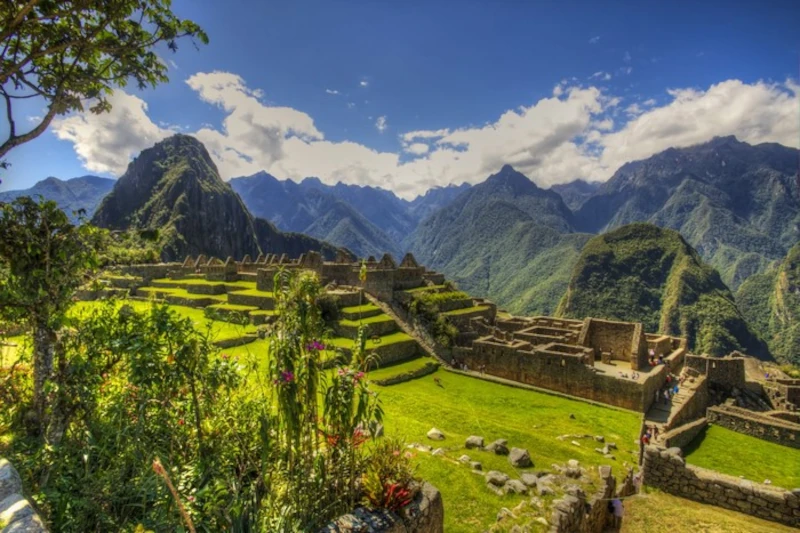
Preserving the Trail and Ethical Travel
Respect for the environment is essential during your Short Inca Trail experience. Stick to marked paths and carry out all trash. These practices help preserve the trail and surrounding ecosystems, like the cloud forest.
Consider the cultural impact of your visit. Engage with local communities respectfully and support local businesses when possible. Sustainable travel ensures that future generations can also enjoy this incredible experience.
Remember, your journey along the Inca Trail to Machu Picchu is not just a personal achievement but a privilege. Treat the trail and its history with the reverence it deserves.
After the Trail: Reflecting and Returning
After completing your hike, take time to explore Aguas Calientes and relax. Visiting the hot springs or local markets can be a perfect way to unwind. Reflect on the journey and the incredible sights and experiences you’ve encountered.
The next day we will return to Machu Picchu for a more leisurely exploration. With the physical challenge behind you, you can appreciate the site with fresh eyes and a deeper understanding.
Sharing your story can inspire others and provide useful tips for those planning their journey. Consider documenting your journey through blogs or social media, focusing on the highs and the lessons learned.
This adventure, from the start to the descent from Machu Picchu, proves your personal endurance. Your Short Inca Trail experience will be a unique memory. It has natural beauty and historical awe, truly a highlight of any visit to Peru.
What to Expect During Your Short Inca Trail Experience
The Short Inca Trail experience is a captivating adventure that combines natural beauty with historical richness. This condensed version of the Classic Inca Trail condenses the excitement into just two days. Whether you’re a seasoned trekker or a first-time hiker, knowing what to expect can greatly enhance your journey.
Initial Stages: From Cusco to the Trailhead
Your adventure begins with a scenic drive from Cusco to the Ollantaytambo train station. This route passes through the lush, winding valleys of the Sacred Valley, offering stunning vistas that set the stage for what’s ahead. The journey from Ollantaytambo to the trailhead is itself a glimpse into the rich cultural tapestry of the Andes.
Upon arrival at the trailhead, your guide will provide a brief orientation. They’ll cover safety, trail etiquette, and the itinerary for the 2-day Inca Trail. It’s crucial to listen carefully, as understanding these details will ensure a smoother trek.
The initial trekking phase is exhilarating as you start to encounter the ancient paths carved by the Incas. Your path has flora and archaeological sites, smaller yet no less fascinating than Machu Picchu itself. These early hours are vital for acclimatizing to the high altitudes.
Ascending Through History
As you ascend, the real essence of the Inca Trail begins to unfold. The trail’s engineering marvels, from terraces to stairways, tell a story of a civilization’s connection to its landscape. Each step brings you closer not just to Machu Picchu but to understanding the Inca’s mastery of architecture.
The first major archaeological site you encounter is typically Chachabamba. These ruins are a fine example of Inca craftsmanship. Guides put them as an example or as an introductory lesson in Inca history from your guide. Here, amidst the remnants of the past, the magnitude of your trek begins to sink in.
Progressing further, the trail offers intermittent views of the Sacred Valley. These vistas serve as breathtaking backdrops for contemplation and photography. Remember to pace yourself; the high altitudes can make the climb challenging but also rewarding.
Meeting the Clouds: Approaching Machu Picchu
By the second day of the 2-day Inca Trail, anticipation builds as you approach Machu Picchu. The path becomes more dramatic, with ancient stairways leading you through denser cloud forests. The air grows cooler and mistier, adding a mystical element to the hike.
One of the most unforgettable moments is crossing the Wiñay Wayna, which means “Forever Young” in Quechua. Located just a few kilometers from Machu Picchu, Wiñay Wayna is a fine display of terraced gardens. They cascade down the hillside, showcasing the Inca’s sophisticated agricultural techniques.
The final leg of your journey takes you to the Sun Gate, the traditional entrance used by the Incas to Machu Picchu. Arriving here, you are rewarded with your first panoramic view of the iconic ruins. It’s a profound moment, realizing that you are walking the same path the Incas did centuries ago.
Preserving the Path: Responsible Trekking
Trekking the Short Inca Trail is not just a physical challenge but a privilege. It’s crucial to approach the trail with respect for its historical and environmental significance. This means adhering to the paths marked by your guide and avoiding taking shortcuts, which can erode and damage the landscape.
Always carry out what you carry in, minimizing your environmental footprint. The trail is a UNESCO World Heritage site and deserves every bit of care we can offer. This respect ensures that future generations can also enjoy and learn from this remarkable experience.
Choosing eco-friendly gear and supporting local communities by buying local products can also contribute positively. These actions help sustain the local economy and encourage the preservation of the trail and its surroundings.
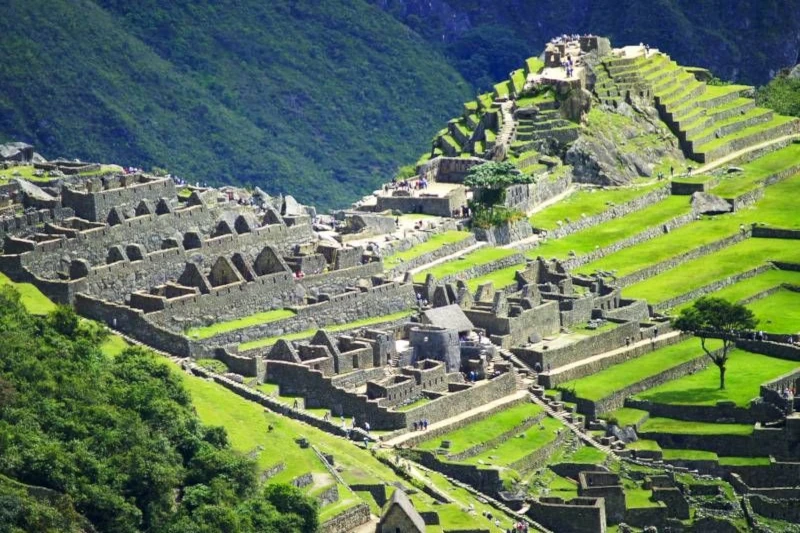
Reflecting on Your Short Inca Trail Experience
As your Short Inca Trail experience concludes, take time to reflect on the journey. The physical demands of the trail are matched by the spiritual and emotional enrichment it offers. Visiting Machu Picchu is the climax of the trek, but the journey itself holds its own rewards.
Consider how the landscapes, the people you met along the way, and the history have impacted you. Sharing these stories with others can inspire them to embark on their own adventures and respect these ancient paths.
The Short Inca Trail is more than just a way to Machu Picchu; it has a connection to history, nature, and oneself. Whether you’re reflecting at the Sun Gate or exploring the ruins, the memories of this trail will linger long after your return home.
Making Lasting Memories: Capturing the Best of the Inca Trail
The Short Inca Trail experience is an adventure that promises both challenge and awe. This iconic trek offers unique opportunities to capture memories that will last a lifetime. From the stunning landscapes to the intricate ruins, every step is a photo opportunity.
Preparing for Your Trek: Capturing Equipment
When preparing for your Inca Trail 2 days journey, choosing the right photography equipment is crucial. A lightweight, durable camera that performs well in various light conditions is ideal. Consider extra batteries and memory cards, as charging options are limited.
Using a smartphone? Invest in a quality phone camera lens and a portable power bank. Many phones now have excellent camera capabilities suitable for high-quality travel photography. Always protect your devices from moisture with waterproof cases or bags.
Your camera will capture the most important moments with your group and friends. If you want to save your phone battery, consider carrying a power bank too.
However, we recommend disconnecting from the external world. This encourages you to merge with the Short Inca Trail experience, the nature and the history of the trail.
A sturdy tripod can also be a game-changer for capturing breathtaking landscape shots or group photos. Compact, travel-sized tripods are easy to carry and set up. They’re invaluable for early morning shots at Machu Picchu, capturing the mystical dawn light.
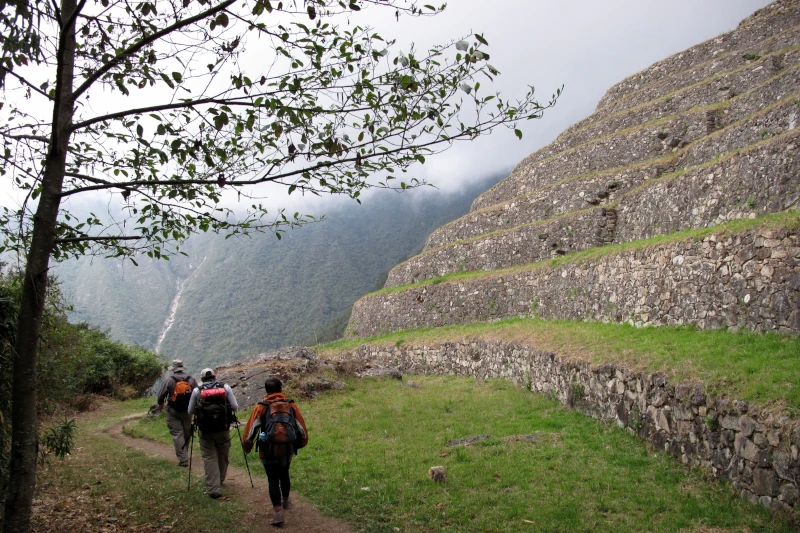
The Art of Photography on the Trail
Understanding the basics of outdoor photography enhances your Short Inca Trail experience. Early morning or late afternoon light provides the best natural lighting for dramatic and soft images. These “golden hours” offer incredible hues that add a magical touch to your photos.
Composition matters when photographing landscapes and ruins. Use the rule of thirds to frame your shots effectively, placing points of interest at the intersections or along the lines. This technique helps in creating balanced and intriguing photos.
Don’t rush your shots. Take time to enjoy the view and consider different perspectives. However, we don’t encourage to step out the official path
Iconic Spots Along the Trail
The Inca Trail 2 days trek is filled with iconic spots perfect for memorable photographs. The first major site, Wiñay Wayna, offers terraced ruins against a backdrop of lush greenery. It’s an ideal spot for capturing the essence of Incan agricultural ingenuity.
Arriving at the Sun Gate, the panoramic views of Machu Picchu are unparalleled. Capture the vastness of the site with a wide-angle lens. This moment often feels surreal as the majestic site unfolds in front of you.
Another remarkable photo opportunity is the Inti Punku or Sun Gate at dawn. The way the sunrise illuminates the stones and landscapes is breathtaking. Be ready with your camera; these moments are fleeting.
Engaging with the Environment
To truly capture the essence of the Short Inca Trail experience, engage deeply with your surroundings. Listen to the stories and explanations from your guide; these narratives can inspire the way you view and photograph the trail. Understanding the history adds depth to your images.
Capturing candid shots of your fellow hikers adds a personal touch to your photo collection. These moments can reflect the real emotions and challenges of the hike. Always ask for permission before taking close-up shots of people, respecting their privacy and experience.
The flora and fauna along the trail are also worth your attention. From exotic orchids to llamas grazing near ancient stone walls. These details offer a glimpse into the biodiversity of the region. If you are a professional photographer going to Machu Picchu, carry different lenses.
Sharing and Preserving Your Memories
Once home, sorting and editing your photographs is as important as capturing them. Take the time to carefully select and enhance your images. Special editing software can be for adjust lighting, colors, and shadows to bring out the best in your shots.
Creating a photo book or a digital album can help organize your memories from the Short Inca Trail experience. These collections serve as wonderful personal keepsakes or gifts for fellow adventurers. They narrate your journey through a visual story that brings your adventure back to life.
Don’t forget about posting the most memorable photos in your social media feed. Some spots classify as “instagrammable”, so take advantage of these.
Sharing your photographs and experiences online. Travel blogs are great venues for showcasing your journey. Your shared stories can inspire others to embark on their own Short Inca Trail experience, spreading the wonder of this historic path.
Also, is important to leave a review in the main travel platforms if you trail was enjoyable. Include some feedback to your tour operator.
By preparing adequately, engaging with your surroundings, and thoughtfully preserving your memories, you can capture the essence of the Inca Trail. This journey offers more than just a physical challenge—it’s a portal into past civilizations and a chance to make lasting memories that you’ll cherish for a lifetime.

The Salkantay Trek is not just an alternative path to Machu Picchu. It is a different experience beyond the common ones. Knowing the facts about Salkantay Trek is essential before you take it.
This trek takes you through the diverse landscapes of the Andes. Each step reveals breathtaking vistas and ecological wonders.
Named after the majestic Mt. Salkantay, the trek offers more than scenic views. It’s a path steeped in history and culture. Adventure seekers and nature lovers, take note.
This trek is the top alternative to the Inca Trail. It challenges trekkers with its rugged terrain and altitude. Yet, the beauty you encounter is unparalleled.
Get ready to discover facts about Salkantay Trek that will astonish you. From hidden ruins to unique wildlife, every day surprises. Your adventure of a lifetime awaits.
Facts About Salkantay Trek
- Higher than Machu Picchu: Salkantay Peak, the namesake of the trek, towers at 6,271 meters above sea level. This surpassed Machu Picchu at 2,430 meters.
- A Road Less Traveled: Is unlike the often-crowded Inca Trail. The Salkantay Trek offers a more solitary experience with nature, making it ideal for those seeking tranquility and solitude.
- Glacial Beauty: The trek features stunning views of the Humantay Lake, which is formed by melting glaciers and known for its striking turquoise waters.
- Ecozones Galore: Travelers pass through varied ecozones. They go from sub-tropical forests to alpine meadows, which showcase a dramatic shift in landscape within just a few days.
- Cultural Encounters: The route gives trekkers the opportunity to visit remote Andean villages. This offers you an approach into the authentic lifestyles and traditions of local communities.
- Flora and Fauna: The trail is home to an array of biodiversity including rare species. Maybe you will have the chance to spot an Andean Condor or llamas.
- A Sky Full of Stars: It has a high altitude and remote location. The Salkantay Trek offers some of the clearest night skies, ideal for stargazing.
- Challenge and Reward: This trek is one of the toughest treks in Peru. This makes the journey a significant accomplishment for those who complete it.
- A Spiritual Journey: Many locals consider the path to be a spiritual journey. This is because it passes by sacred sites used by Incas which are still revered today.
- Innovative Eco-Camps: Some parts of the trek feature eco-friendly campsites designed to blend with nature. This provides comfort without compromising the environment.
Discovering the Mysteries: Historical and Cultural Significance of the Salkantay Trek
The Salkantay Trek stands out as an emblematic journey. Moreover, it offers more than just an alternative route to Machu Picchu. This trek immerses you in the profound depths of Andean culture.
Trekkers that choose the Salkantay Trek to Machu Picchu confront the raw beauty of the Andes mountain range. Additionally, the path traverses environments that have shaped local cultures for millennia. Consequently, each step on this route offers a story waiting to be told.
One of the most iconic landmarks along this trek is the Salkantay Pass. Standing over 4,600 meters above sea level, it challenges even seasoned hikers. Importantly, this high pass not only tests your physical limits but also rewards you with awe-inspiring vistas.
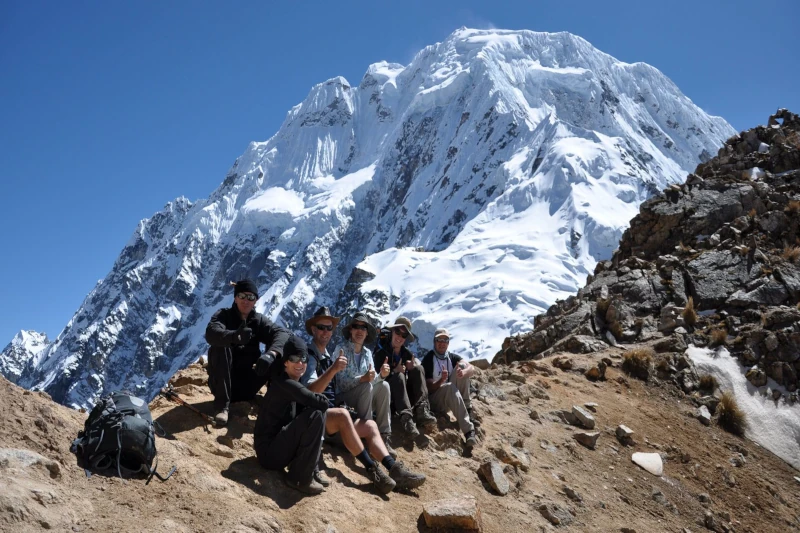
Nature’s Bounty and Challenges
The Salkantay Trek to Machu Picchu also showcases the Andes’ ecological diversity. Starting from the snow-capped peaks, the trail descends into the mystical cloud forest. This dramatic change in altitude brings varied climates and ecosystems.
Adventurers face the challenge of altitude sickness, a common issue on such high-elevation hikes. Preparing for this is crucial, as it ensures enjoyment and safety throughout the journey. The trail’s natural obstacles highlight the resilience required to traverse it.
As you descend towards Santa Teresa, the climate warms, offering a soothing respite at the Cocalmayo Hot Springs. These thermal waters provide a perfect setting to rejuvenate. Additionally, here, hot showers under the stars make for a memorable end to strenuous days.
Moreover, the Salkantay Trek to Machu Picchu is more than an alternative route; it’s a transformative expedition. Importantly, it connects trekkers not only to a destination but to a legacy. Consequently, the trail leads to one of the world’s wonders, visiting Machu Picchu.
Furthermore, this five-day trek culminates in the awe-inspiring sight of Machu Picchu. Specifically, the approach from Salkantay offers a unique perspective of the Inca citadel. Thus, it allows for a deeper appreciation of its architectural and spiritual significance.
Additionally, in completing the Salkantay Trek, one does not simply visit Machu Picchu; they experience it. Indeed, the journey through the Andes prepares the spirit to connect with this ancient site. Therefore, each step builds anticipation, making the final arrival truly spectacular.
Ecosystems Unexplored: Discover the Rich Biodiversity Along the Trail
The lower reaches of the trail are adorned with orchids and ferns. Hummingbirds and Andean foxes are common sights, animating the verdant underbrush. The harmony in this ecosystem provides a vibrant start to the trek.
Ascending further, the environment transitions into a more barren, yet equally fascinating, alpine tundra. Rare medicinal plants dot the landscape, used by local communities for centuries. The stark beauty of this area contrasts sharply with the lushness below.
This zone is critical for the conservation of high-altitude wildlife, such as the elusive Andean condor. These majestic birds soar above, symbolizing freedom and the wild spirit of the Andes. Their presence highlights the ecological importance of the Salkantay Trail.
Climate’s Influence on Biodiversity
Temperature and moisture vary greatly along the Salkantay Trek. These factors directly influence the types of ecosystems encountered. From moist cloud forests to dry highland scrub, the diversity is staggering.
Each ecological zone challenges trekkers with its unique climate and terrain. The adaptability of local wildlife to these conditions is remarkable. Observing these adaptations provides insight into the resilience of nature.
Rainfall patterns along the trail also dictate the lushness of the vegetation. Heavier rains in the lower regions support thick forests, while the sparse ones up high sustains only the toughest plants. This gradient creates a tapestry of life, woven tightly with the threads of climate.
These facts about Salkantay Trek are essential for you and your planning. Keep in mind all these in a way to prevent any circumtance.

Flora and Fauna: A Closer Look
The cloud forests teem with life, hosting an array of bird species. Colorful parrots and the rare spectacled bear call this area home. Their survival depends on the continuous canopy that the forest provides.
Higher up, the flora consists mainly of grasses and shrubs, with the occasional flowers adding a splash of color. These plants have adapted to conserve water and withstand freezing temperatures. Their resilience is a testament to the harsh conditions of the Andes.
Among these high-altitude survivors is the Puya raimondii, a giant bromeliad. It blooms once in its lifetime, a sight few are privileged to see. This plant symbolizes the mystery and allure of the Salkantay Trek’s untouched landscapes.
Conservation and Challenges
The Salkantay Trail is not only a path to Machu Picchu but also a corridor for wildlife. It connects various habitats, allowing species to migrate and intermingle. This ecological connection is vital for maintaining genetic diversity.
However, the trail faces threats from climate change and human activity. These challenges could disrupt the delicate balance of these ecosystems. Conservation efforts are crucial to preserve the trail’s biological wealth.
Promoting sustainable trekking practices is part of the solution. Trekkers can contribute by minimizing their environmental impact. Respecting wildlife and adhering to designated paths protect these fragile habitats.
A Trekker’s Paradise
The facts about Salkantay Trek extend beyond its physical demands. Additionally, they encompass the rich tapestry of life along the trail. Furthermore, this trek offers a unique opportunity to connect with nature at its most raw and varied.
For nature enthusiasts and ecologists, indeed, the Salkantay Trek is a must. It’s a journey through some of the most biodiverse ecosystems on the planet. Each step is a discovery, each breath a deeper understanding of Earth’s wonders.
Exploring the Salkantay Trail is more than a hike; it’s an education in biodiversity. Significantly, the facts about Salkantay Trek reveal a world brimming with life, eagerly waiting to be explored. This trek is a reminder of our responsibility to cherish and protect our planet’s natural heritage.
Practical Tips and Essentials: Preparing for Your Salkantay Adventure
The Salkantay Trek requires careful preparation and awareness. This challenging journey offers unparalleled views and experiences. Here are practical tips to ensure you’re ready.
First, prioritize your hiking gear. Invest in a good pair of waterproof hiking boots. These are crucial for navigating the varied terrains you will encounter.
Next, consider the weather, which can’t be predictable. Layering your clothing allows for adjustments throughout the trek. Pack thermal wear, a waterproof jacket, and a warm hat.
Proper hydration is vital, especially at high altitudes. Carry a refillable water bottle to stay hydrated. Water purification tablets or a filter can be lifesavers.
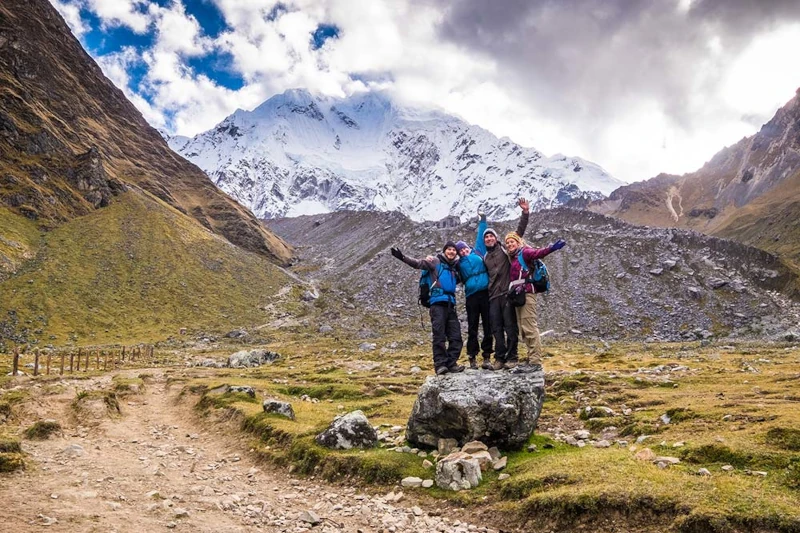
Health and Safety on the Trail
Altitude sickness is a real concern on the Salkantay Trek. Acclimatize for a few days in Cusco before starting the trek. This can greatly reduce your risk of altitude sickness.
Pack a first-aid kit tailored for hiking. Include medication for altitude sickness, bandages, and antiseptics. It’s better to be over-prepared than under-prepared.
Inform someone of your travel schedule. Regular check-ins can be crucial in case of emergencies. Safety should always be your top priority.
Nutrition and Energy
Maintaining energy levels is crucial. Pack high-calorie, nutrient-dense snacks like nuts and dried fruits. These are easy to carry and provide quick energy boosts.
Plan for meals that will offer the necessary sustenance. Many guided tours provide meals, but always bring extra snacks. Check the meal plans and adjust accordingly.
Stay energized and hydrated. Both are key to enjoying and completing your trek successfully. This can make or break your trekking experience.
Environmental Considerations
Respect the natural environment of the Salkantay Trail. Always follow the ‘Leave No Trace’ principles. This protects the ecosystem and minimizes your impact.
Pack all rubbish out with you. Proper disposal of waste helps preserve the trail’s pristine nature. Leave the trail as you found it, or better.
Use established campsites and trails. This reduces wear and tear on the surrounding landscape. Every small action helps in conservation efforts.
Ready for the Journey
The Salkantay Trek is a remarkable adventure that tests your limits. Being well-prepared enhances your experience. Facts about Salkantay Trek indicate it’s both challenging and rewarding.
With the right gear, knowledge, and respect for nature, you’re set for an amazing journey. You must prepare thoroughly, and the Salkantay will provide memories to last a lifetime. Embrace the adventure with confidence and enthusiasm.
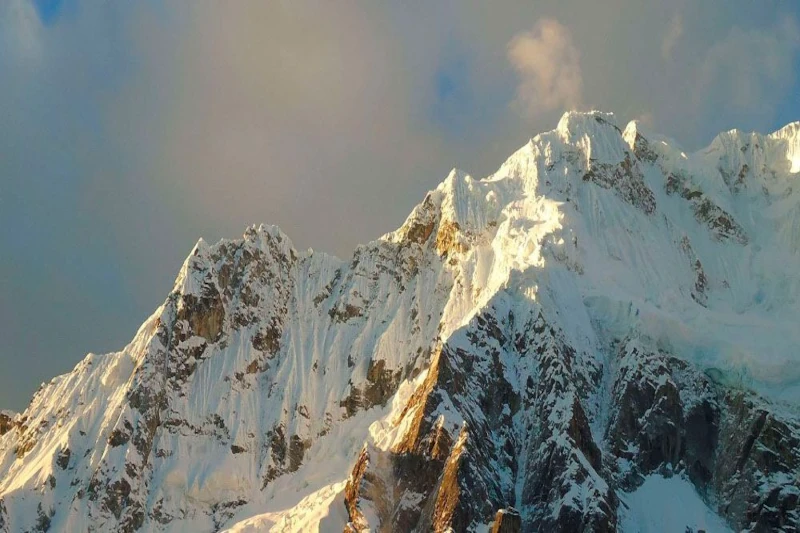
Taking the path of Huchuy Qosqo is a real adventure. This lesser-known Inca site offers stunning vistas. The best times for Huchuy Qosqo can greatly enhance your experience.
Understanding the best times to visit it is crucial. The dry season, from May to September, is perfect. You’ll enjoy clear skies and mild temperatures.
However, each season brings its own charm. The rainy season, from October to April, transforms the landscape. Lush greenery and fewer crowds await the adventurous.
Plan your trip with these insights. Our Huchuy Qosqo Trek is more than just a destination. It’s an experience waiting to be discovered.
Weather Patterns at Huchuy Qosqo: Planning Around the Seasons
Huchuy Qosqo, an ancient Inca ruin, beckons adventurers from around the world. Nestled high in the Peruvian Andes, this site offers breathtaking views. Knowing the best times for Huchuy Qosqo is essential for a rewarding visit.
The site’s unique location affects its weather significantly. Set above the Sacred Valley, it experiences distinct seasonal changes. These changes influence both accessibility and your overall hiking experience.
Most visitors prefer the dry season, from May to September, for their trek to Huchuy Qosqo. Skies during these months are clear, and the paths are mostly dry. This makes hiking less challenging and more enjoyable.
Navigating the Dry Season: Optimal Conditions for Exploration
During the dry season, the landscape of Huchuy Qosqo is particularly inviting. The sun casts sharp shadows across the terraced slopes. These conditions provide ideal light for photographers and sightseers alike.
Hikers can enjoy extended daylight hours, making it possible to explore more thoroughly. Start your journey early to maximize your time at the site. Remember, the entrance fee is necessary, and starting early helps beat the crowds.
Despite cooler nights, the daytime temperatures are comfortable for hiking. Pack layers to accommodate the fluctuating temperatures. A good pair of hiking boots is crucial, as trails can still be rough.
Facing the Rainy Season: A Lush yet Challenging Experience
The rainy season transforms Huchuy Qosqo from November to April. The area around the Incan ruins becomes lush and green. However, the trek can be tougher on the knees due to slippery paths.
Rain can arrive suddenly, often heavy and short-lived. Always carry waterproof gear to stay dry and warm. The views of the Sacred Valley may be shrouded in mist, creating a mystical atmosphere.
Fewer tourists choose to visit during these months. This means you can enjoy a more solitary experience. Just be prepared for mud and the possibility of altitude sickness.
Planning Your Hike: Essential Tips for a Successful Journey
Starting your hike from the town of Lamay adds an authentic cultural dimension. The town is a 30-minute drive from Cusco and serves as the starting point. From here, the Huchuy Qosqo hike spans several hours of scenic trails.
Ensure you are acclimatized to the high altitude before beginning your hike. Cusco is a great place to adjust. Spend a few days exploring local Incan trails before your main trek.
Each step towards Huchuy Qosqo reveals more of the region’s stunning natural beauty. From verdant valleys to rugged mountain peaks, the scenery is unparalleled. Make stops to rest and hydrate, especially if hiking during warmer months.
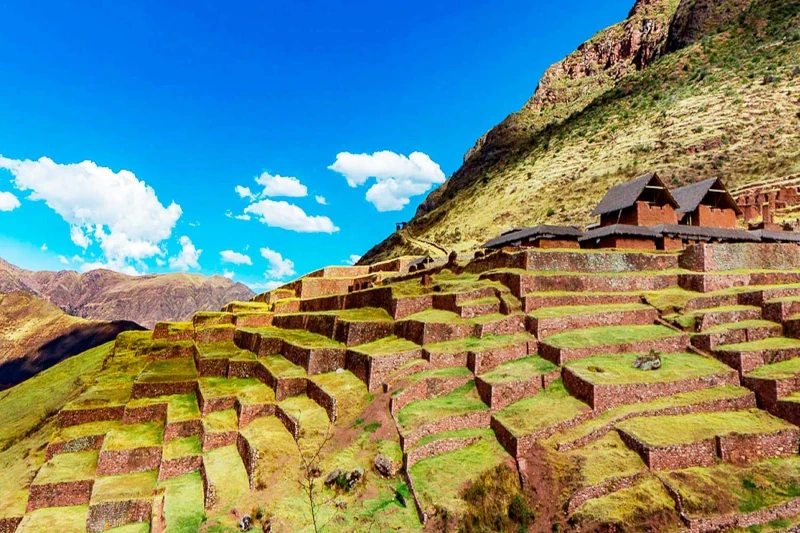
What to Bring: Preparing for Your Adventure
Packing appropriately can make or break your hiking experience to Huchuy Qosqo. Essential items include water, snacks, and a first-aid kit. Also, carry local currency for any incidental expenses along the way.
Huchuy Qosqo, the path to Machu Picchu, means “little Cusco in quechua”. This does not imply that the alternative Inca trails are less than the Classic Inca Trails. All are different experiences.
A map or a guide can enhance your understanding of the ruins and surrounding areas. Many opt for a guided tour to gain deeper insights into the Inca history. Guides can explain the significance of Huchuy Qosqo including its strategic and agricultural roles.
Finally, do not forget your camera or smartphone. The landscapes you’ll encounter are truly once in a lifetime. Capture memories of the trek and the panoramic vistas that await at the summit.
When to Visit Huchuy Qosqo
Choosing the best times for Huchuy Qosqo depends on what you seek from your journey. Whether you prefer the lush, vivid colors of the rainy season or the clear, expansive views of the dry season, planning is key. Each season offers a unique perspective of this historic site, enriching your travel experience with every visit.
By understanding the seasonal weather patterns and preparing accordingly, your visit to Huchuy Qosqo can be nothing short of spectacular. So lace up your boots, check the forecast, and set off on an unforgettable adventure in the heart of the Inca empire.

Crowds and Solitude: Best Times for Huchuy Qosqo
Choosing when to visit Huchuy Qosqo can shape your entire experience. The best times for Huchuy Qosqo hinge on what you seek. Whether it’s solitude or a vibrant crowd, timing is everything.
Visiting during peak season means embracing the crowd. From June to August, the trails buzz with energy. Here, you encounter fellow hikers who share your enthusiasm.
Yet, if peace is what you seek, aim for the shoulder months. May or September can offer that perfect balance. The weather remains pleasant, and the tourist numbers dwindle.
The Early Bird Experience
Starting your hike early can also affect crowd levels. A pre-dawn start might see you ascending in solitude. This means reaching Huchuy Qosqo just as the sun illuminates the ruins.
The first light at the ruins is both peaceful and enchanting. It’s also a perfect time for photography. Fewer people equals fewer interruptions.
Choosing Weekdays Over Weekends
Weekdays naturally see fewer visitors compared to weekends. If you can, plan your visit from Monday to Thursday. This strategy reduces encounters with large groups.
Most tour operators, including Inca Path, manage medium size groups. Alternative routes to Machu Picchu are great for an intimate experience.
School holidays and public holidays also see a spike in visitors. Avoid these times if possible. Check the local calendar when planning your trip.
Reduced crowds enhance the experience of the trek. With fewer interruptions, the sounds of nature prevail. The path becomes not just a route, but a journey.

Weather Considerations and Crowd Dynamics
Weather influences both the landscape and the number of visitors. Dry season skies offer clarity but bring more people. Rainy season treks are lonelier, but the paths can be tough on the knees.
Prepare for mud if you choose the wetter months. Hiking poles become invaluable aids. They provide stability and confidence on slippery slopes.
Despite the challenges, the rainy season has its allure. The mist adds a mysterious veil to the ruins. It’s a unique experience that fewer people witness.
Understanding Visitor Trends for Better Planning
Tourist trends show more international visitors during North American and European summer breaks. Knowing this helps in planning a quieter visit. Look for times when travel is less common in these regions.
Local visitors tend to visit during national holidays. Research these dates to avoid unexpected crowds. Such planning ensures a more serene hiking experience.
Guides often recommend times based on these trends. They aim to provide the best experience possible. Trust their advice for an optimal visit.
Timing Your Visit for the Ideal Experience
Deciding the best times for Huchuy Qosqo depends on personal preferences. Whether you seek lively interaction or quiet reflection, consider both the season and the day of the week. Proper timing not only meets your expectations but exceeds them.
With thoughtful planning, your visit to Huchuy Qosqo becomes more than just a hike. It becomes a journey tailored to your desires. So choose wisely, and let the ancient stones speak to you in the tranquility or the buzz of fellow explorers.
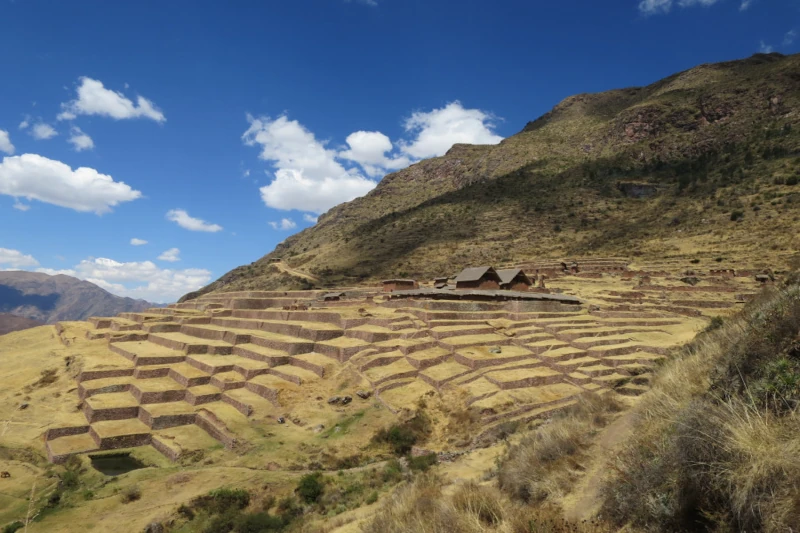
Traveling to high altitudes like Cusco poses a risk of altitude sickness. The altitude sickness in Cusco condition affects many visitors each year. Understanding your risk is crucial for a safe trip.
Symptoms of altitude sickness can vary widely. They include headaches, nausea, and dizziness. Recognizing these early signs is key to managing the condition.
Prevention strategies are simple yet effective. Stay hydrated and avoid overexertion upon arrival. Gradually acclimatize to increase your comfort and safety.
This guide will help you assess your risk. It provides essential tips to prevent and manage altitude sickness. Ensure your Cusco adventure is memorable for the right reasons.
Recognizing the Symptoms of Altitude Sickness in Cusco
When you arrive in Cusco, the breathtaking scenery is not the only thing that can leave you breathless. At over 3,400 meters (11,152 feet above sea level), Cusco’s high elevation often triggers altitude sickness.
This condition also known as mountain sickness is often a discomfort. You need some planning to explore this historic city or venture out to Machu Picchu. Understanding and recognizing the early symptoms of altitude sickness is essential for a safe and enjoyable trip.
Early Signs: When to Be Concerned
Altitude sickness in Cusco can manifest within a few hours of elevation gain. The first signs are often subtle, beginning with a headache. You might also experience dizziness and fatigue as your body adjusts to the thinner air. These symptoms can seem mild at first but paying attention to them is crucial for managing your health at higher altitudes.
Nausea is another common early symptom, sometimes accompanied by loss of appetite. It’s important to monitor how you feel, especially during the first couple of days after you arrive in Cusco. Ignoring these initial symptoms can lead to more severe health issues as your body continues to face oxygen scarcity.
Sleep disturbances are also frequent among visitors. You may find it hard to sleep through the night, which can exacerbate other symptoms due to lack of rest. Taking it easy during your first days can help mitigate these effects.

More Serious Symptoms: Knowing When to Seek Help
As altitude sickness progresses, symptoms can become more severe. Shortness of breath is a key indicator that your body is struggling with the altitude. This can occur not only during physical exertion but also while you are at rest. If you notice this symptom, it is important to decrease your activity level and consider seeking medical advice.
Altitude sickness can escalate to high-altitude pulmonary edema (HAPE) or high-altitude cerebral edema (HACE). HAPE involves fluid build-up in the lungs.
You can identify it by extreme fatigue, persistent coughing, and difficulty breathing even when resting. HACE is marked by confusion, inability to walk straight, and behavioral changes. This signalates a serious threat that requires immediate medical intervention.
Prevention: Reducing Your Risk
Preventing altitude sickness begins with a proper acclimatization schedule. Spend a couple of days in Cusco before ascending to higher altitudes like the ones in the Salkantay Trek. This gradual approach allows your body to adapt to the altitude changes more effectively.
Stay hydrated and avoid alcohol or substances that can dehydrate your body or exacerbate symptoms. Also, eating light meals rich in carbohydrates can provide energy without overtaxing your digestive system. Remember, the key to enjoying your visit to Cusco and Machu Picchu lies in taking proactive steps to prevent altitude sickness.
Managing Symptoms: What You Can Do
If you start to feel the effects of altitude sickness, it’s important to act quickly. Resting is crucial—don’t push yourself to continue activities if you’re feeling unwell. Over-the-counter medications like ibuprofen can help alleviate mild symptoms like headaches and nausea.
Using supplemental oxygen can also provide relief, especially if symptoms are related to oxygen deprivation. Many hotels in Cusco offer oxygen service for guests experiencing severe symptoms. Listening to your body and responding appropriately can make all the difference in your recovery.
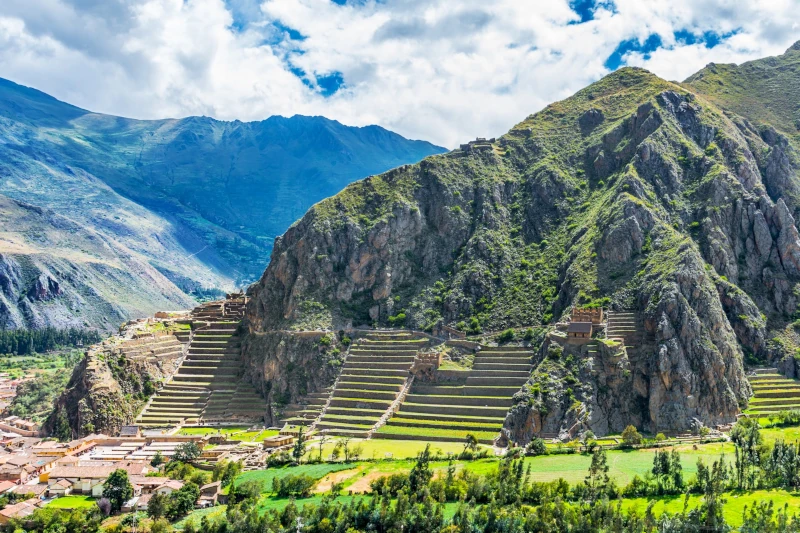
Enjoying Cusco Safely
Visiting Cusco is an unforgettable experience, rich with cultural history and stunning landscapes. By recognizing the signs of altitude sickness and taking steps to prevent and manage it, you ensure that your memories of Cusco and Machu Picchu are as vibrant as the destinations themselves. Remember, altitude sickness is manageable, and with the right precautions, you can fully enjoy the beauty and mystique of these ancient high-altitude treasures.
Effective Prevention and Treatment Strategies for High Altitude Visitors
When you arrive in Cusco, the gateway to the Jungle Inca Trail and Sacred Valley, the elevation change is immediate and impactful. The city sits at an altitude that can significantly affect unacclimatized travelers. Understanding how to recognize and manage the symptoms of altitude sickness in Cusco is crucial for all visitors.
Initial Symptoms: What to Watch For
Initially, the first indicators of altitude sickness in Cusco often appear subtly. Consequently, visitors may experience persistent headaches that are not typical for them. Moreover, these headaches often worsen at night or during the early morning.
Similarly, fatigue is another common symptom, regardless of the level of physical activity. For instance, you might feel unusually tired after a simple walk. Consequently, this fatigue can make touring the city’s historic sites more challenging.
Additionally, digestive disturbances such as nausea or general stomach discomfort are also common. As a result, these symptoms can decrease your appetite, affecting your energy levels. Therefore, it’s essential to monitor how you feel continually.
Acute Symptoms: Signs of Increased Severity
As altitude sickness progresses, the symptoms can become more acute and harder to ignore. For example, one might experience dizziness or light-headedness even when sitting down. These signs indicate that the body is struggling to adapt to the high altitude.
Furthermore, an increased heart rate is another critical symptom to watch for. If your pulse is fast even at rest, it’s a clear sign of altitude stress. This can occur without any physical exertion.
In severe cases, you may experience shortness of breath while resting. If breathing becomes difficult, it’s vital to seek medical attention immediately. This is a sign that the body is not receiving enough oxygen.
Preventative Measures: Reducing Risk
To minimize the risk of altitude sickness in Cusco, take preventive steps starting the day you arrive. It is advisable to rest during your first day in the city. Avoid strenuous activities that could exacerbate symptoms.
Drink plenty of water to stay hydrated. Altitude can dehydrate you more quickly than at sea level. Avoiding beverages that can cause dehydration, like coffee and alcohol, is also crucial.
We know that you want to enjoy your trip day and night but if you drink alcohol, don’t trek the day after.
Chewing coca leaves, a traditional remedy used by locals, can help alleviate some symptoms. These leaves can reduce the severity of headaches and help with overall discomfort. Many local shops and vendors offer coca leaves specifically for this purpose.
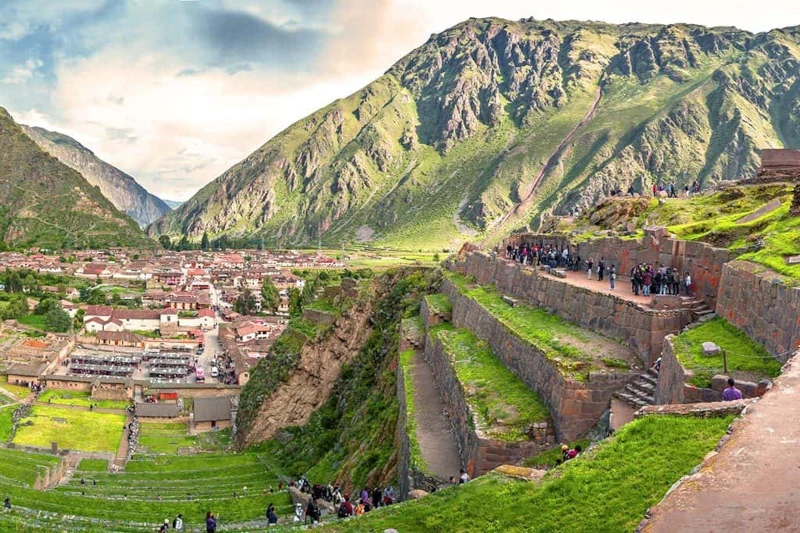
Long-Term Management: Staying Healthy
If you plan to stay in Cusco for more than a few days, managing symptoms becomes part of daily life. Continue to drink plenty of water and rest adequately. Your body may need more time to acclimatize.
Eating small, frequent meals can help maintain your energy. High-carbohydrate foods are particularly beneficial. They are easier to digest and can help maintain energy levels.
Keep monitoring your symptoms. If they worsen or do not improve, consider visiting a healthcare provider. Cusco has several clinics experienced in treating altitude sickness.
Enjoying Cusco with Caution
Cusco serves as a hub for tourists heading to Machu Picchu and even Lake Titicaca or Humantay Lake. By taking the right precautions and knowing how to manage the altitude, you can enjoy all the paths.
Recognize the signs of altitude sickness early. Act quickly to treat symptoms before they become severe. This way, your experience in Cusco will be memorable for all the right reasons.
Altitude sickness in Cusco does not have to derail your plans. With proper preparation and awareness, you can explore the rich cultural heritage and stunning landscapes safely and comfortably. Remember, the key is to acclimatize gradually and take care of your health throughout your journey.
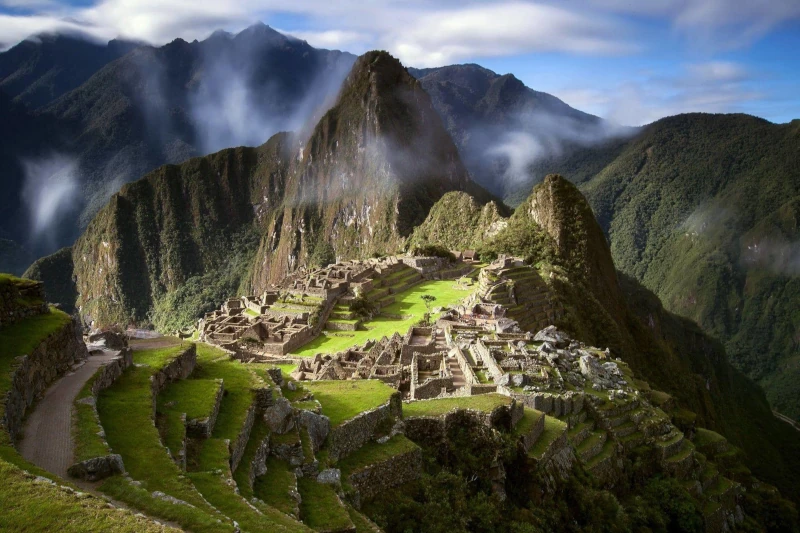
Camping at Choquequirao Trek is a thrilling adventure with no comparison. This lesser-known cousin of Machu Picchu offers breathtaking views and a challenging journey. If you’re planning to camp, preparation is key.
Here, we share essential tips and best practices for camping along the Choquequirao Trek. From selecting gear to choosing campsites, we’ve got you covered. Consequently, ensure your experience is as memorable as the scenery.
Packing light and right is crucial for this trek. Specifically, focus on multi-use items and lightweight equipment. Remember, every ounce counts when you’re climbing.
Weather can be unpredictable in the Andes. Therefore, always prepare for sudden changes. Layering your clothing will help you adapt quickly.
Lastly, respect the environment as you explore it. Stick to established trails and campgrounds. Additionally, leave no trace to preserve the beauty for future adventurers.
Essential Gear Checklist for Choquequirao Camping
Preparing for the Trek
Camping at Choquequirao requires careful planning and the right equipment. Our Choquequirao Trek to Machu Picchu is a demanding high altitude hike. You’ll traverse diverse terrains on the Choquequirao Trail, making robust gear essential.
Begin by selecting a durable backpack. It should handle all your essentials without weighing you down. Comfort and fit are paramount to avoid back strain.
A high-quality sleeping bag is your next crucial item. Night temperatures can plummet, especially at high altitudes. Choose a sleeping bag rated for low temperatures to ensure warmth.
Water and Nutrition Needs
Hydration is key while trekking. Carry a reliable water filtration system. Streams along the trail provide water, but purifying it is a must.
Plan your meals strategically before you begin. Buy food that is nutritious and easy to prepare. High-energy, lightweight options are best for the trail.
Footwear and Clothing Essentials
Invest in high-quality hiking boots. Your footwear should offer support and be well broken-in. Blisters can turn an adventurous trek into a painful ordeal.
Pack moisture-wicking clothing and thermal layers. Layering allows you to adapt to changing weather conditions. Always include a waterproof jacket and pants.
A good hat and UV-protection sunglasses are indispensable. They protect against the sun and reduce glare. At high altitudes, UV rays are particularly intense.
Health and Safety Gear
First aid kits are essential for any outdoor activity. Include items for blisters, cuts, and other minor injuries. Also, carry altitude sickness medication as a precaution.
A headlamp or flashlight is necessary. The Choquequirao Trail can be treacherous in low light. Ensure your path is always well lit.
Don’t forget sunscreen and lip balm with SPF. Sun protection is crucial to prevent burns. Reapply every two hours, or more often if sweating.
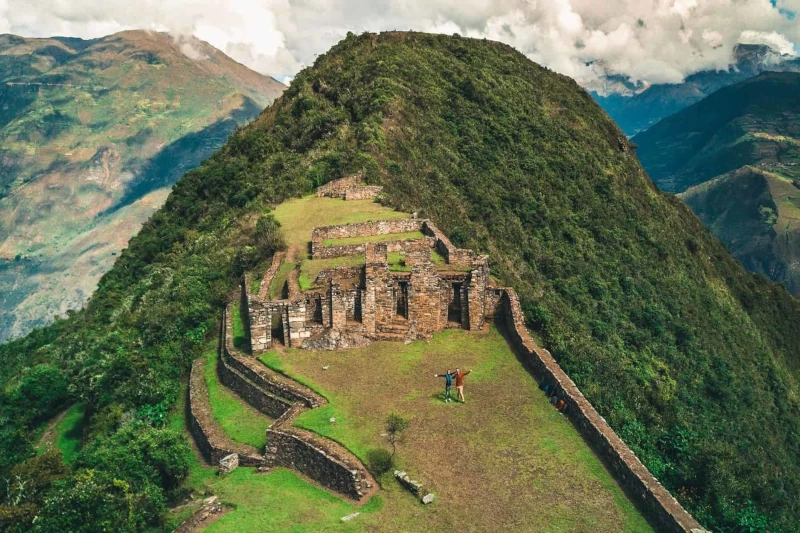
Navigating the Route
A reliable GPS or a detailed map of the Choquequirao Trail is crucial. Orientation can be challenging in remote areas. Always have a backup power source for electronic devices.
However you can trust our guides in charge of your Choquequirao Trek. The experience will show you the safety and trust you need.
Consider a walking stick or trekking poles. They provide stability and support on uneven terrain. Poles also reduce the impact on your knees during descents.
Check the entrance fee and permit requirements in advance. All trekkers need to pay to access the Choquequirao campsite. Keep all necessary documents accessible.
If you take the Choquequirao Trail with Inca Path, we will take care of all the logistics. The long days of trekking will require the most relaxation and enjoyable trip.
Sustainable Trekking Practices for Camping at Choquequirao
Respect the natural environment of the Choquequirao Trekking route. Always follow the ‘leave no trace’ principles. Minimize your impact and carry out all trash.
Use biodegradable soap and avoid polluting water sources. Personal hygiene is important, but it shouldn’t harm the environment. Plan accordingly to maintain cleanliness.
Engage with local communities respectfully. Purchase supplies or services from them if possible. This supports the local economy and enriches your travel experience.
Choosing the Right Gear Rental
If you prefer not to buy, gear rental is a viable option. Many stores offer high-quality gear. Ensure it’s in good condition before setting out. Inca Path also offers some gear to rent.
Test all rented gear before starting the trek. Familiarize yourself with its functionality. Adjust backpacks and sleeping bags to fit comfortably.
Remember, renting can save money and reduce travel baggage. However, always check for reliability and reviews of rental services. This ensures a hassle-free camping experience during the camping at Choquequirao.
Camping at Choquequirao is an unforgettable adventure that demands thorough preparation. The right gear enhances your experience and ensures safety. Follow this checklist to prepare adequately for the challenges of the Choquequirao Trek to Machu Picchu.
Whether you buy or rent your gear, quality should never be compromised. Prepare for the trek with diligence and respect for nature. Your adventure to Choquequirao will be a remarkable journey through one of Peru’s hidden gems.
Navigating Weather and Terrain: Tips for Safety and Comfort
Camping at Choquequirao trek presents unique climate challenges. Understanding these conditions is crucial for any camper or hiker. Temperatures can vary dramatically, from warm days to freezing nights.
Rain is common in the area, especially during the wet season. Waterproof gear is essential to stay dry and comfortable. Always pack a lightweight, durable raincoat.
Prepare for intense sun exposure during the day. High altitude increases the risk of sunburn. Apply sunscreen regularly, and wear a hat and sunglasses.
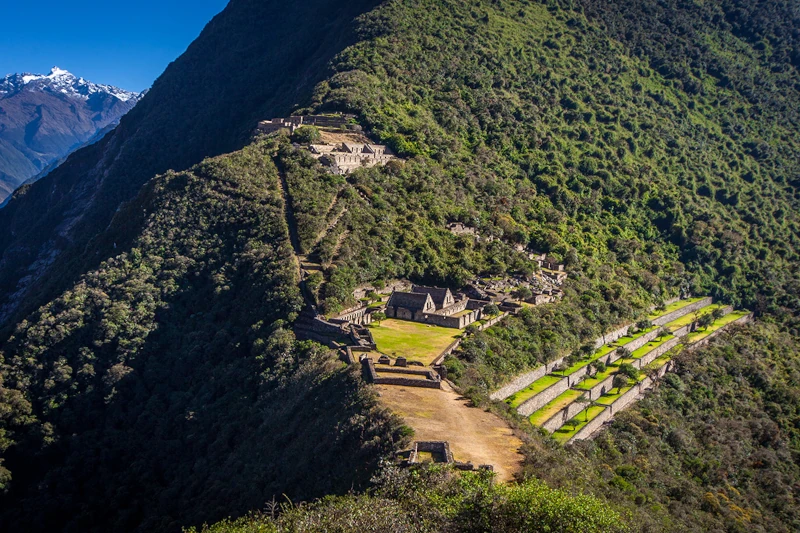
Choosing the Right Time to Visit
Camping at Choquequirao is ideal in the dry season, from May to October. During this period, it offers clearer skies and safer hiking conditions. Consequently, trails are less slippery, and river crossings are safer.
However, the dry season also brings colder nights. Therefore, pack thermal layers to combat the cold. Additionally, sleeping bags rated for low temperatures are highly recommended.
Visiting during the shoulder months might offer solitude. Nonetheless, prepare for unpredictable weather. Thus, check forecasts frequently and plan accordingly.
Adapting to the Terrain
The terrain on the Choquequirao trek is rugged and varied, including steep inclines and declines. Consequently, proper hiking boots with good grip and ankle support are essential.
The hike from Choquequirao to Machu Picchu involves long distances daily. Therefore, train for endurance and strength before your trip. This preparation will make your experience more enjoyable and safer.
Portions of the trail, like the descent to Playa Rosalina, are particularly steep. Hence, trekking poles can reduce strain on your knees. They also provide stability on uneven surfaces.
Essential Gear and Strategies
Navigating the terrain requires reliable gear. Therefore, a guided tour is highly recommended for first-timers. Guides know the safest routes and provide valuable insights about the area.
Camping at Choquequirao involves several nights in the wilderness. Consequently, choose lightweight, durable tents and sleeping pads. Comfort in your campsite is crucial after long hiking days.
Day 2 Santa Rosa Baja, Santa Teresa, or Aguas Calientes feature different terrains. As such, your gear and clothing must be versatile.
Handling Altitude and Distance
The trek covers significant elevation changes. Therefore, acclimatize properly to avoid altitude sickness. Additionally, spend a few days at a high-altitude location before starting the trek.
Recognize symptoms of altitude sickness: headache, nausea, and dizziness. If symptoms appear, immediately descend to a lower altitude. Above all, always prioritize health over itinerary.
Stay hydrated and maintain energy with nutritious foods. Although water sources are available, always purify water before drinking. Moreover, high-energy snacks are great for quick refueling during hikes.
Safety Precautions and Environmental Considerations
Respecting the environment is paramount. Thus, stick to marked trails to prevent erosion and habitat disturbance. Also, camp only in designated areas to minimize your impact.
Be ready for any emergency. Always carry a first aid kit, know basic wilderness first aid, and have a plan for evacuation if necessary. Importantly, safety should always be your top priority.
Inform someone of your itinerary before you leave. Furthermore, check in regularly if possible. This practice ensures help can find you quickly in an emergency, although with Inca Path, you’re in good hands.
Camping at Choquequirao is an adventure that rewards the prepared ones. Respect the natural elements and equip yourself properly. Consequently, this ensures a safe and memorable experience.
A guided tour is highly recommended, especially for less experienced hikers. Guides not only enhance safety but also enrich your journey with historical and cultural insights.
By following these tips, you’re set for a successful trek. The Choquequirao journey offers not just challenges, but also profound beauty and a deep connection with nature. Enjoy every step, prepared and aware.
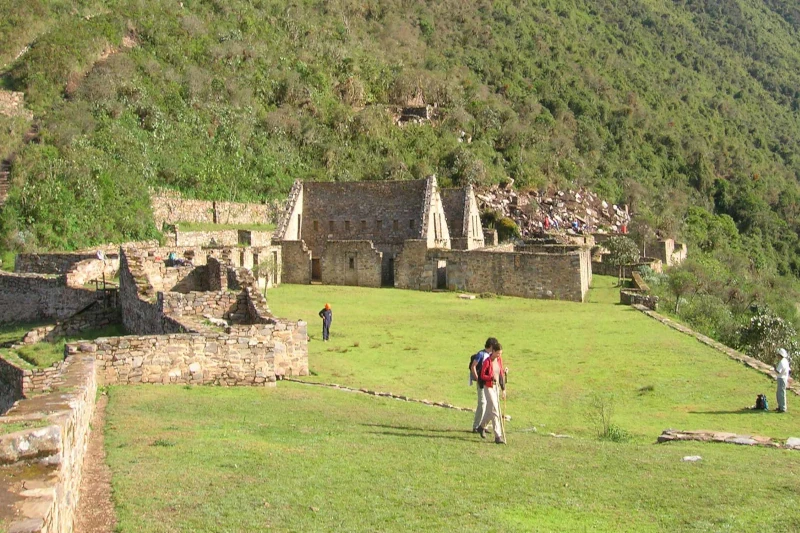
Leave No Trace: Eco-Friendly Practices for Responsible Trekkers
Camping at Choquequirao challenges trekkers to respect the pristine environment. The “Leave No Trace” principles guide our interactions with nature. Adhering to these principles ensures the area remains unspoiled for future generations.
Every trekker has a role in preserving the natural beauty of Choquequirao. It starts with planning and preparation. Understand the specific regulations and sensitive areas of the trek before you start.
Pack It In, Pack It Out
All trash and leftovers must leave the trail with you. This includes organic waste like fruit peels and seeds. Even biodegradable materials can disrupt local wildlife habits.
Pack all your garbage in resealable bags. Dispose of it properly at designated disposal points. Never leave trash at the Choquequirao campsite.
Recycle and reuse materials whenever possible. This reduces the overall waste you need to carry out. It also limits your environmental footprint on the trail.
Choosing the Right Supplies
Select eco-friendly and biodegradable products for your trek. From soap to toilet paper, every little bit helps. These products break down naturally and minimize impact on the ecosystem.
Avoid single-use plastics by opting for reusable containers and utensils. Bring a refillable water bottle and purification tablets. This eliminates the need for disposable plastic water bottles.
Prepare and repackage food to minimize waste. Remove excess packaging before you start your trek. This reduces the volume of trash you need to manage on the trail.
Staying on Track
Always stick to established trails and campsites. This helps protect undergrowth and soil from erosion. Straying from the path can harm plant life and disrupt wildlife.
Camping at Choquequirao in designated sites also prevents damage. These areas are chosen to concentrate impact where it can be best managed. It helps preserve the surrounding wilderness.
Avoid creating new trails or shortcuts. This preserves the natural habitat and maintains the trail’s integrity. Always follow marked paths and use boardwalks where provided.
Respecting Wildlife and Nature
hiring local guides and buying local products. This action helps the community benefit from your visit. It also reduces the carbon footprint associated with long-distance goods transport.
Share the principles of Leave No Trace with fellow trekkers. Consequently, educating others amplifies the impact of your efforts. This, in turn, promotes a culture of responsibility and conservation.
Camping at Choquequirao is an unforgettable experience that comes with significant responsibility. Therefore, embracing Leave No Trace principles is crucial for the preservation of this majestic place. As a result, it ensures that its beauty and wilderness continue to inspire and awe.
Plan carefully and tread lightly. Importantly, your actions make a difference. Let’s ensure that the magic of Choquequirao remains intact for all who follow in our footsteps.
By practicing these eco-friendly habits, you contribute to a sustainable future for outdoor adventures. Moreover, enjoy the breathtaking vistas and challenging treks responsibly. Remember, we are all stewards of these incredible landscapes.
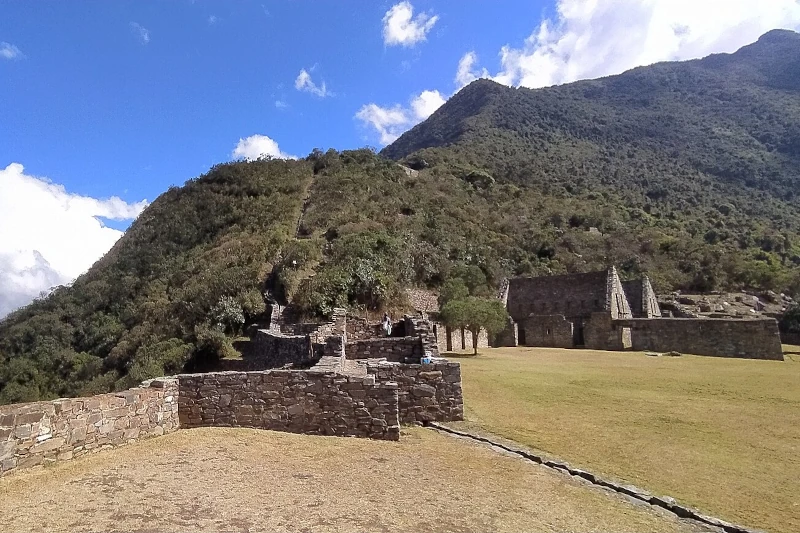
A journey to Machu Picchu is an adventure like no other. This ancient Inca city captures the imagination with its breathtaking views. It doesn’t matter if you’re a seasoned traveler or a curious explorer, you’ll learn how to get to Machu Picchu.
We’ll cover the different routes you can take, their costs, and essential travel tips. Machu Picchu is accessible via train, trek, or bus. Each option offers a unique experience and varies in price.
Our goal is to make your travel planning as smooth as possible. By the end of this post, you’ll know the best route for your budget and preferences. Let’s dive into the details of your upcoming adventure to Machu Picchu!
Exploring Your Options: Different Ways to Reach Machu Picchu
For many, a visit to the majestic city of the Incas represents a bucket-list adventure. Machu Picchu, standing high at about 2,430 meters above sea level, offers a glimpse into ancient Inca civilization. Understanding the various routes to get to Machu Picchu enhances your experience.
One popular way to reach Machu Picchu is by train, which is ideal for those who prefer comfort. Several train stations in the Sacred Valley, including Ollantaytambo, serve as starting points. This journey lets you absorb the stunning views of the cloud forest and rugged mountains seamlessly.
Adventurous souls might opt for hiking the Inca Trail, a more immersive approach. This route takes you through ancient footpaths that lead directly to the entrance to Machu Picchu. Remember, the Peruvian government limits access to preserve the trail, so booking early is crucial.
Is important to recognize the relevance of preservation. Keep in mind that Machu Picchu was built during the Inca era. So, when you visit Machu Picchu prioritize the respect and the conservation.
Embracing the Adventure: Hiking and Alternative Treks
For a deeper connection with nature, alternative treks like the Salkantay Trek or Lares trek are available. These routes offer a blend of cultural and natural beauty, leading up to Machu Picchu. Each trek challenges travelers with varying degrees of difficulty and stunning landscapes.
Hiking these trails not only brings you closer to some sites but exposes you to the risk of altitude sickness. It’s essential to acclimatize and stay hydrated. Such preparation ensures you enjoy every moment of your journey to the lost city.
Lastly, for those short on time, a day trip to Machu Picchu by train is feasible. You can leave from Cusco or Ollantaytambo in the Sacred Valley early in the morning. This option provides a quick yet fulfilling glimpse of the Inca ruins, although it’s a whirlwind experience.
Choosing Your Path: What to Consider
Deciding how to get to Machu Picchu depends on your time, budget, and physical ability. Each option offers a different perspective of the Inca site and surrounding areas. Consider what you hope to get out of the experience when choosing your path.
Tour operators provide valuable assistance, whether you’re looking for a guided trek or a train journey. They can help manage logistics like transport and entrance tickets. This support is crucial, as navigating the options alone can be daunting.
Inca Path is the best companion you can have for any trek you would like to take. We handle the logistics, the preparations and all the details for you. The only thing you need to do is to relax and enjoy this World Wonder.
Exploring Machu Picchu by train or hiking the Inca Trail, your journey to this ancient site will be unforgettable. Prepare well, choose the right path for you. Once you are ready, step into the history of the Inca ruins surrounded by the breathtaking Andean landscape.
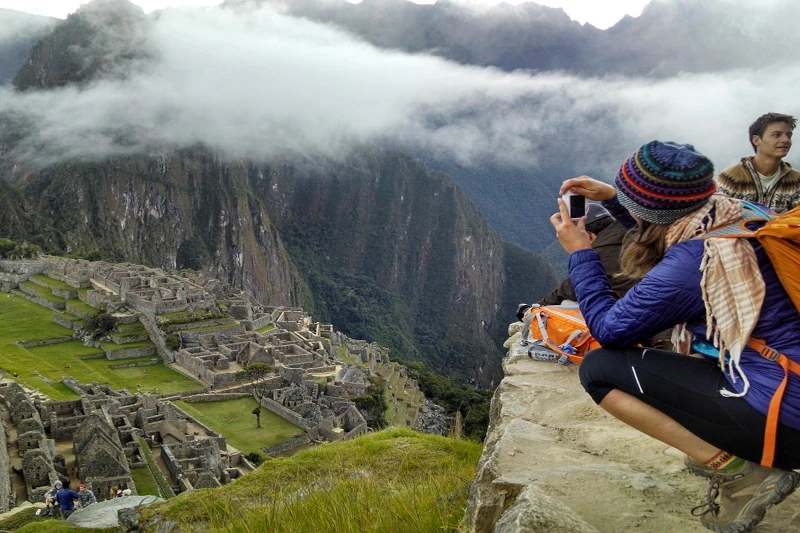
Budgeting Your Journey: Understanding the Costs Involved
Planning a trip to Machu Picchu involves various costs that can vary according the chosen route and amenities. When budgeting for this once-in-a-lifetime trip, consider all expenses to ensure a smooth experience. The costs include transportation, accommodation, permits, and guide services.
For those looking to get to Machu Picchu, several tour options cater to different budgets and preferences. Each tour provides unique experiences, from train rides through the Sacred Valley to adventurous treks. It’s important to select a package that aligns with your financial plan and comfort level.
Inca Path Machu Picchu Treks costs
Understanding the specific costs associated with each tour helps in making an informed decision. Below are some popular tours offered us, Inca Path Tour Operator, along with their costs:
- Machu Picchu Full Day Tour – USD 260. A day tour that includes transportation, tickets, and a professional guide. Ideal for those with limited time.
- Sacred Valley and Machu Picchu 2 Days / 1 Night – USD 565. This tour combines visits to key sites in the Sacred Valley with an overnight stay. It ends in a full day tour at Machu Picchu.
- Inca Jungle Trek to Machu Picchu – 4 Days USD 285. An adventurous option that includes biking and hiking through the jungle to reach Machu Picchu. It offers a blend of adventure sports and traditional hiking.
- Salkantay Machu Picchu 4 Days / 3 Nights – USD 299. Is a trek through one of the most beautiful and diverse sceneries en route to Machu Picchu. Is perfect for those who enjoy long hikes and remote landscapes.
- Short Inca Trail to Machu Picchu – 2 Days USD 469. A quicker alternative to the full Inca Trail. This tour is suitable for those who want a taste of hiking but within a shorter time frame.
- Inca Trail to Machu Picchu 4 Days 3 Nights – USD 629: The classic trek along the historical Inca Trail, leading directly to Machu Picchu. It includes permits, guide, porters, and meals.
Tailoring Your Budget: Additional Costs to Consider
Besides tour costs, other expenses include meals not covered by the tour, personal gear, and optional extras like porters or upgraded accommodations. It’s also wise to set aside a contingency fund for unexpected expenses.
Booking early can often secure better rates and ensure availability, especially for limited-capacity adventures like the Inca Trail. Many tour operators offer early bird discounts, so it pays to plan ahead.
A well-planned budget is essential for a hassle-free journey to Machu Picchu. Consider all possible costs, choose the right tour, and get ready for an unforgettable adventure in the heart of the Inca empire. By understanding the full scope of expenses, you can fully enjoy your visit to this iconic site without financial surprises.
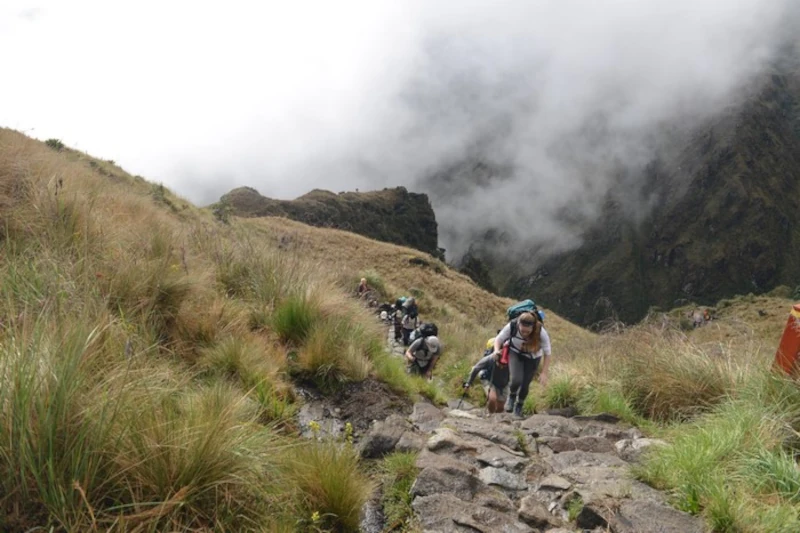
Practical Advice: Top Tips for a Smooth Machu Picchu Trip
Visiting Machu Picchu is an unforgettable experience, enriched by the mystique of its archaeological sites. To get to Machu Picchu without a hitch, early planning is key. Booking your tour months in advance secures your spot and often snags a better deal.
Choose the right season to visit Machu Picchu for the best experience. The dry season from May to September offers clearer skies and fewer disruptions. This period is ideal for photography and enjoying the grandeur of the landscape.
There are special tickets to hike Machu Picchu Mountain or Huayna Picchu Mountain. But they need to be booked in advance.
Pack appropriately for the weather and activities planned during your visit. Layered clothing adapts to varying temperatures throughout the day. Don’t forget essentials like water, sunscreen, and a hat to protect against the sun.
Navigating the Site: Making the Most of Your Visit
Upon arrival, hiring a knowledgeable guide enhances your understanding of Machu Picchu. Guides explain the historical significance of each structure within this ancient city. They can also help you navigate the site to avoid missing important features.
Respect the rules set by the Peruvian government to preserve this UNESCO World Heritage site. Stick to marked paths and avoid touching or climbing the ruins. These practices help maintain the integrity of Machu Picchu for future visitors.
Manage your time wisely to cover all significant aspects of Machu Picchu. Start early to beat the crowds and enjoy quieter moments at popular spots. Prioritize key attractions to ensure you don’t miss anything important.

Health Tips: Staying Comfortable and Safe
Altitude sickness is a real concern when trying to get to Machu Picchu. Spend a few days acclimatizing in Cusco or the Sacred Valley before your visit. This adjustment period reduces the risk of altitude-related discomfort.
Stay hydrated and eat light meals to combat the effects of high altitude. Keeping your energy up is crucial for enjoying the day fully. Always carry water with you, especially when hiking Machu Picchu Mountain.
Ensure you have travel insurance that covers high-altitude trekking. This preparation protects you financially in case of medical emergencies or unexpected trip alterations. It’s better to be safe than sorry, especially in remote areas like Machu Picchu.
By following these practical tips, your journey to Machu Picchu will be as breathtaking as the destination itself. Proper preparation allows you to immerse fully in the magic of the archaeological sites. Enjoy every moment at this iconic symbol of Inca civilization.
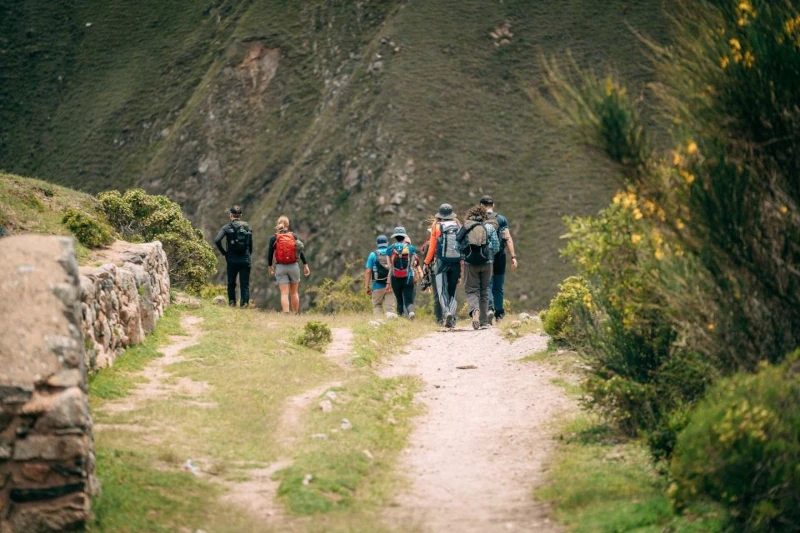
TOP EXPERIENCES IN PERU
BEST TRAVEL PACKAGES AVAILABLE
Popular Destinations
CHOOSE YOUR NEXT DESTINATION



